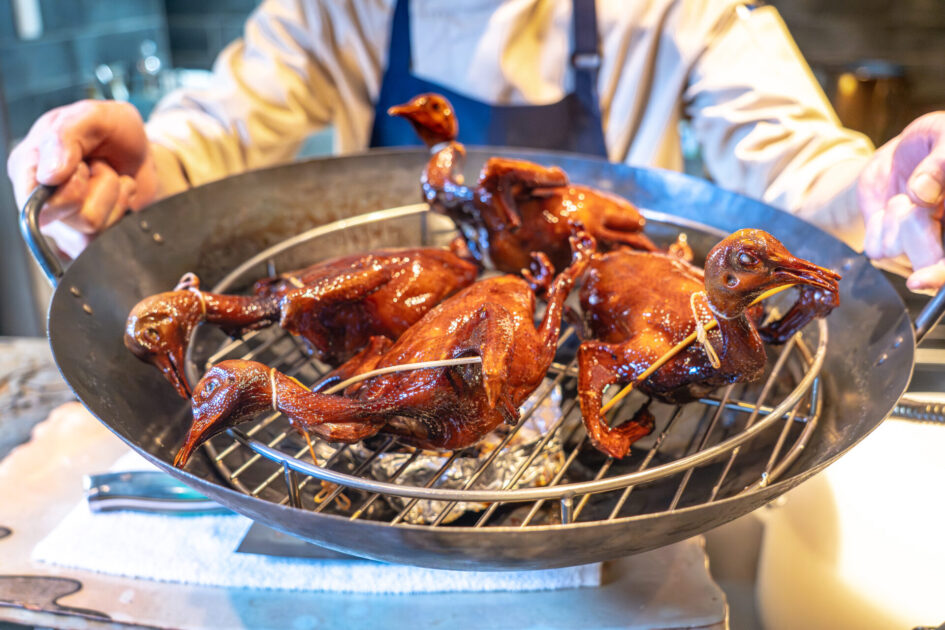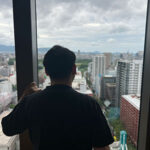CONTENTS
About Ninshōrō
Concept
Nestled in the quiet residential neighborhood of Shichiku in Kyoto’s Kita Ward, Ninshōrō is a refined Chinese restaurant specializing in full-course authentic Cantonese cuisine. Since its founding, it has steadily—but unmistakably—built a reputation for delivering culinary experiences centered around the concept of “jimi” (subtle, nourishing flavor). More than just dining, a visit to Ninshōrō offers a poetic moment that resonates with all five senses.
The restaurant’s name draws inspiration from a line in a Chinese poem:
“A modest joy, a cup to share…”
This poetic sentiment embodies a space where nature and the flavors of ingredients take center stage—an inviting, comforting place that guests are naturally drawn to. This philosophy mirrors the vision of chef-owner Makoto Ueoka, who is committed to honoring the intrinsic depth and flavor of each ingredient. The atmosphere is unpretentious, yet it leaves a profound and lingering impression.
About Chef Makoto Ueoka
Chef Makoto Ueoka began his culinary journey at the age of 16 at the Kyoto Hotel Okura (then known simply as Kyoto Hotel). He went on to refine his skills in hotel kitchens including the Hotel Nikko Osaka and EXIVI Arima Rikyu. Throughout over 15 years of honing his craft, he also trained in Hong Kong and Guangzhou, integrating authentic techniques with a deep respect for Japanese-style hospitality.
In November 2019, he opened Ninshōrō, choosing to step away from the rigid frameworks of hotel-style recipes. Instead, he pursued a cooking style guided by instinct and personal experience, rooted in his own senses.
His commitment to technique is uncompromising. From reinterpreting classic Cantonese dishes like crispy roasted pork (脆皮燒肉) and crispy-skinned chicken (脆皮鶏) to crafting steamed soups with ingredient-specific timing, each dish reflects a deep culinary philosophy. Soups, for example, are proposed to be enjoyed as is—never mixed—allowing each layer of flavor to be appreciated on its own.
Chef Ueoka also places great importance on aesthetics. He designed the interior himself, using antique Jingdezhen porcelain, Chinese teaware, and Tamba Tachikui pottery to create an atmosphere reminiscent of a curated art gallery.
Recognition
Located discreetly in a Kyoto suburb, Ninshōrō has quickly become a must-visit destination for gourmets across Japan. Within just a few years of opening, it’s now considered one of the most difficult restaurants to book in the country.
Its accolades speak volumes:
-
Tabelog Gold Award in both 2024 and 2025
-
Tabelog Silver Award in 2022 and 2023, marking four consecutive years of top-tier recognition
-
Featured multiple times (2021, 2023, 2024) in Tabelog’s Top 100 Chinese Restaurants WEST
Its innovative yet respectful take on traditional Cantonese cuisine has earned praise from critics and connoisseurs alike. The magazine Fujingaho wrote that Ninshōrō has “created a new context for Chinese cuisine in Kyoto.”
With an impressive Tabelog score of 4.57 out of 5.00, diners have shared comments like:
-
“I started making trips to Kyoto just to eat here.”
-
“It completely redefined my understanding of Chinese food.”
It’s more than just a restaurant—it’s an immersive culinary experience, one that’s frequently recommended by food experts and chefs, and a defining part of Kyoto’s contemporary dining scene.

Dining Prelude
Exterior & Entrance
Located in a quiet corner of Kyoto’s Shichiku neighborhood, Ninshōrō stands out with its striking black-and-white facade—a minimalist, modern home with poetic charm.
Its white wall, etched with the restaurant’s name and Chinese verse, presents itself like a piece of architectural calligraphy, merging modern design with ancient literary elegance.
Climb the gentle steps, and you’re welcomed by a wooden lattice door and the glow of softly-lit lanterns, offering calm in the day and a romantic hush at night. The pathway to the entrance evokes a sense of ritual and reverence, almost like stepping through a sacred boundary, gently preparing you for the experience ahead.
This minimalist yet dignified aesthetic is a direct reflection of Ninshōrō’s refined philosophy.
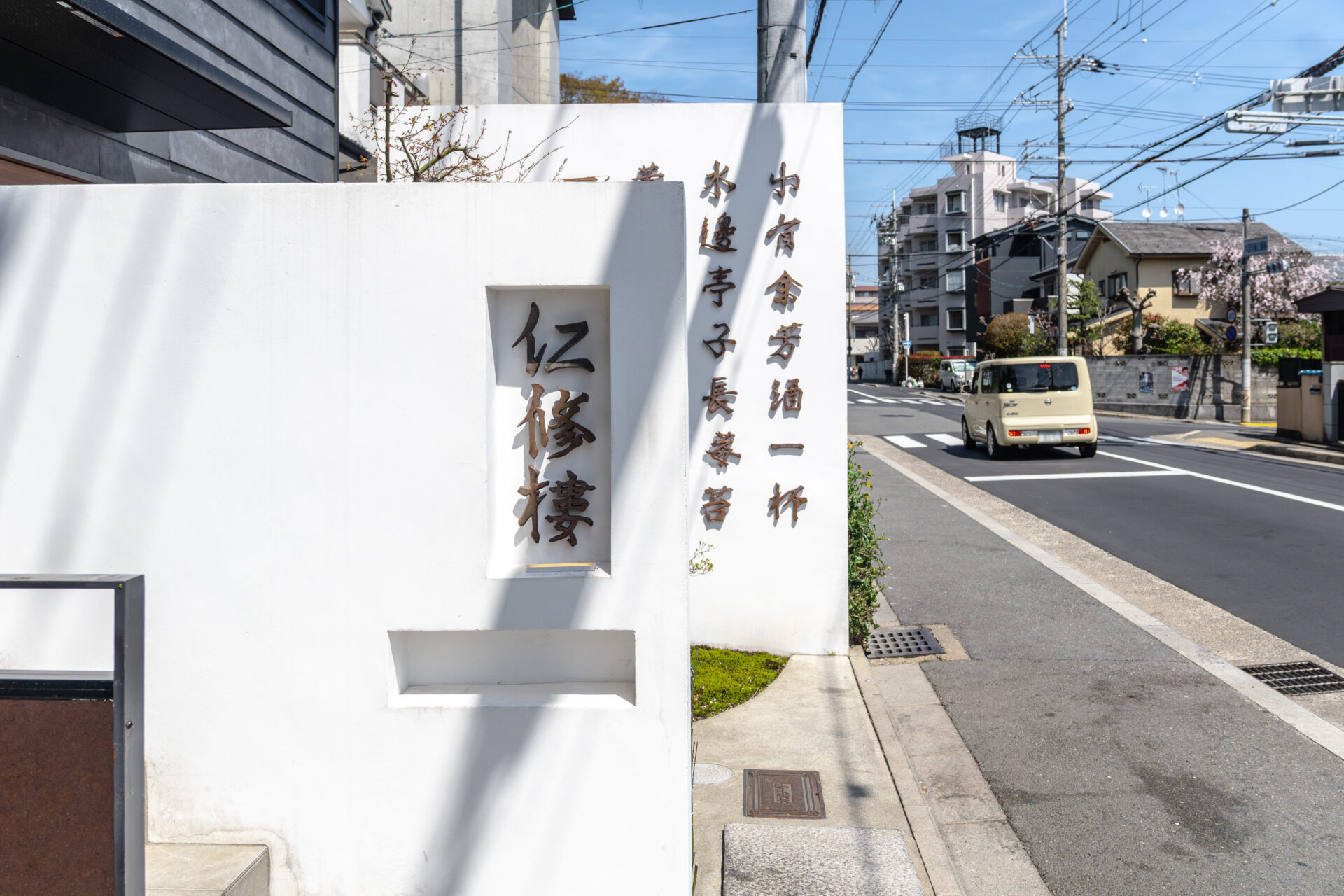
Dining Space
Upon entering, you’re greeted by a counter kitchen in jet black and a single slab of solid wood counter seating only eight guests. This intimate setting is the very stage of Ninshōrō.
The space is toned down in hues but rich in atmosphere. Black tiled walls and stainless steel appliances lend a serene tension—controlled yet never cold. Gentle lighting and natural daylight provide harmony, highlighting the textures of materials throughout the room.
A small garden glimpsed through a round window, and carefully arranged Chinese teaware, resemble an ink painting. These quiet details offer moments of pause between courses.
Despite the proximity to the kitchen, guests are never overwhelmed by noise or aroma. Instead, there’s a tranquil presence of the kitchen—the sound of flames, the careful movements of the chef—all forming a subtle symphony that narrates the culinary tale.
This is where stillness and motion coexist. The food, space, and presentation speak as one—a deeply sensory experience best felt from these counter seats.
Before the first dish arrives, you’re welcomed by an ornate serving plate—porcelain adorned with peonies, birds, and auspicious motifs like pine, bamboo, and plum, accompanied by Chinese calligraphy. Whether Jingdezhen porcelain or classic blue-and-white ceramics, each plate evokes the cultural heritage of Chinese cuisine before any food is even served.
Every detail of the table setting—brass napkin rings, heavy linens, gold-edged paper elements—embodies a quiet dignity. Nothing is overdone, but everything feels deliberate.
In Ninshōrō’s view, tableware is not just a vessel but a storyteller. The selection changes with the seasons and menu, from delicate porcelain to robust stoneware, enhancing the impression of each dish.
Rather than dominate, each plate harmonizes with the food—an understated yet powerful expression of chef Ueoka’s refined aesthetic and curatorial skill.
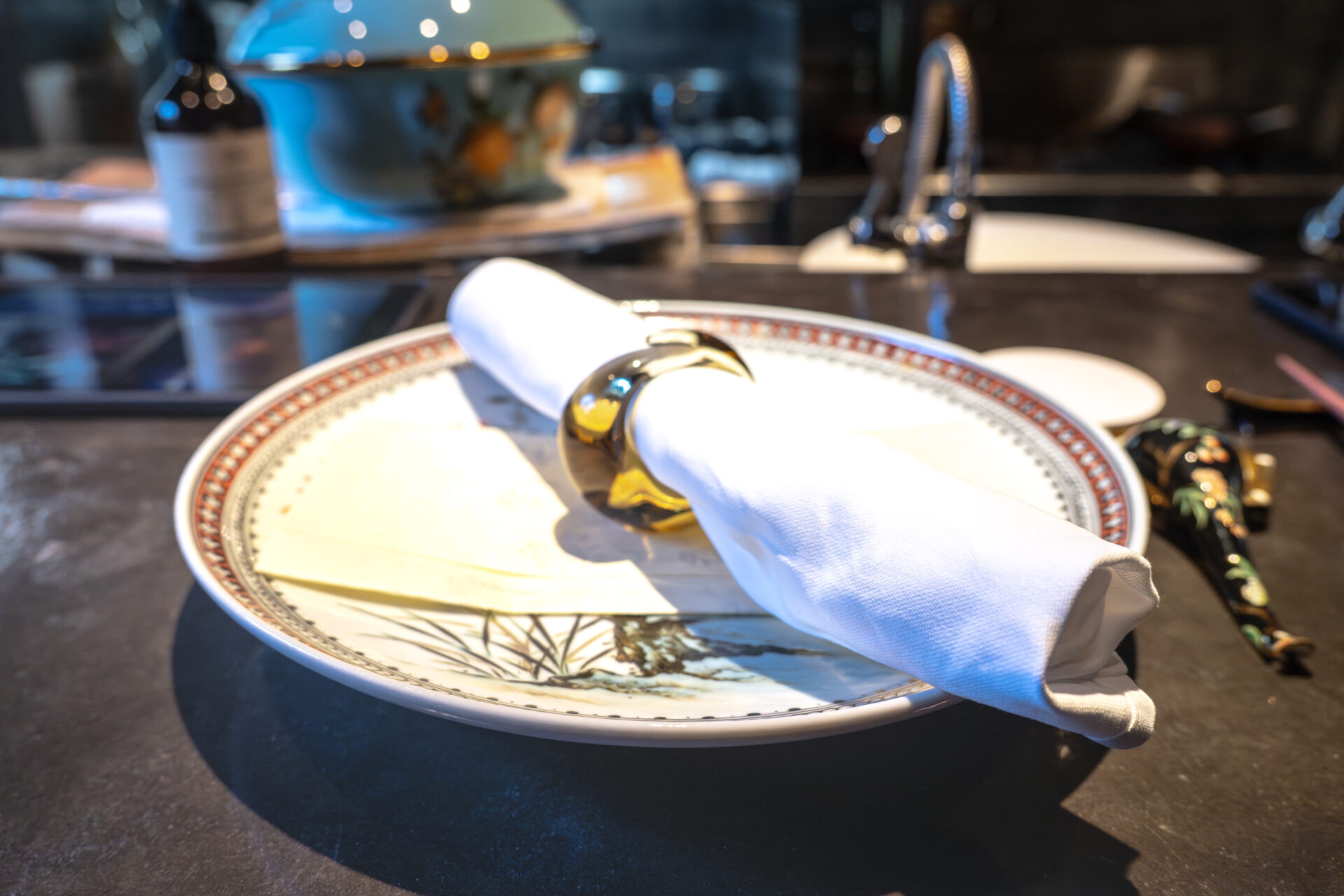
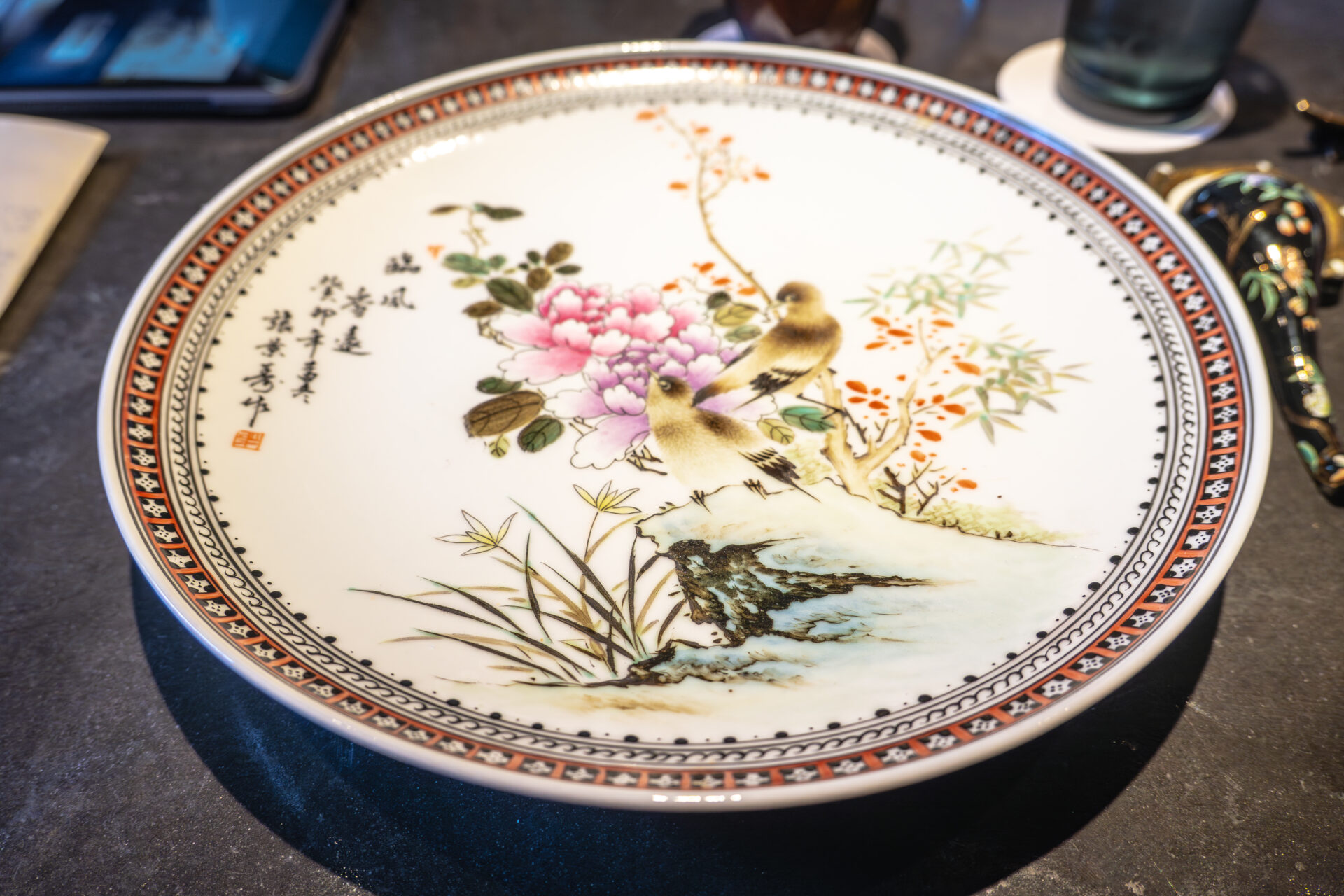
Menu Presentation
As you take your seat, you’re presented with a beautiful hand-written menu that resembles a work of calligraphy.
Crafted on delicate washi paper, the bold yet gentle brushstrokes display the course titles in Chinese characters, with accompanying English translations. A red seal and the date complete the impression of a poetic scroll, setting the tone for the journey ahead.
Dishes such as
-
紅棗海螺炖 (Double-boiled soup of red dates and sea snail)
-
龍井網油挟 (Lung Ching tea–infused liver and asparagus wrapped in caul fat)
showcase expressive language where the ingredients and techniques tell a story.
This menu isn’t just a list—it’s a prologue, an introduction from the chef. As the meal unfolds, the stories behind the characters on the paper rise to the surface.
In this way, the menu itself becomes the restaurant’s first course—before the food arrives.
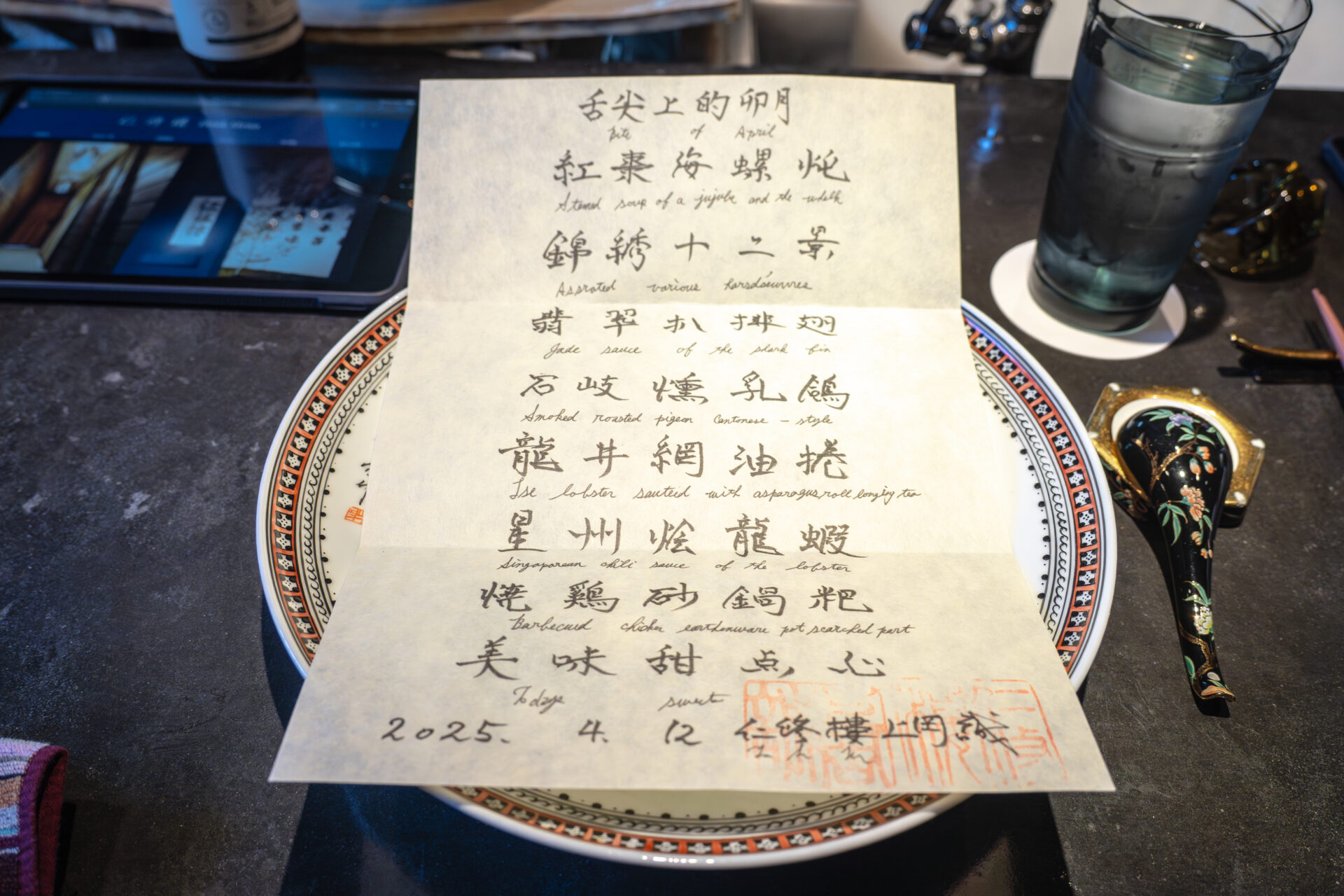
Starter Drink: Ninshōrō Highball
The meal begins with a signature Ninshōrō Highball.
This house-made cocktail combines 10-year-aged Shaoxing wine infused with goji berries, dried plum, and dried ginger, all topped with soda for a light, effervescent finish.
The result is a flavor both rich and harmonious: the depth of the Shaoxing wine, the gentle tartness of dried plum, the sweet warmth of goji, and the subtle spice of ginger—evoking a nuanced herbal tea-like complexity. The carbonation lifts the blend, awakening the palate gently.
The glimmer of ruby-red goji berries floating in the glass, paired with glistening ice, creates a visual and sensory calm. Even before the first dish, this drink encapsulates the restaurant’s design philosophy.
This is no ordinary welcome drink. It’s the opening line of a conversation that unfolds course by course—quietly, elegantly, and with depth.
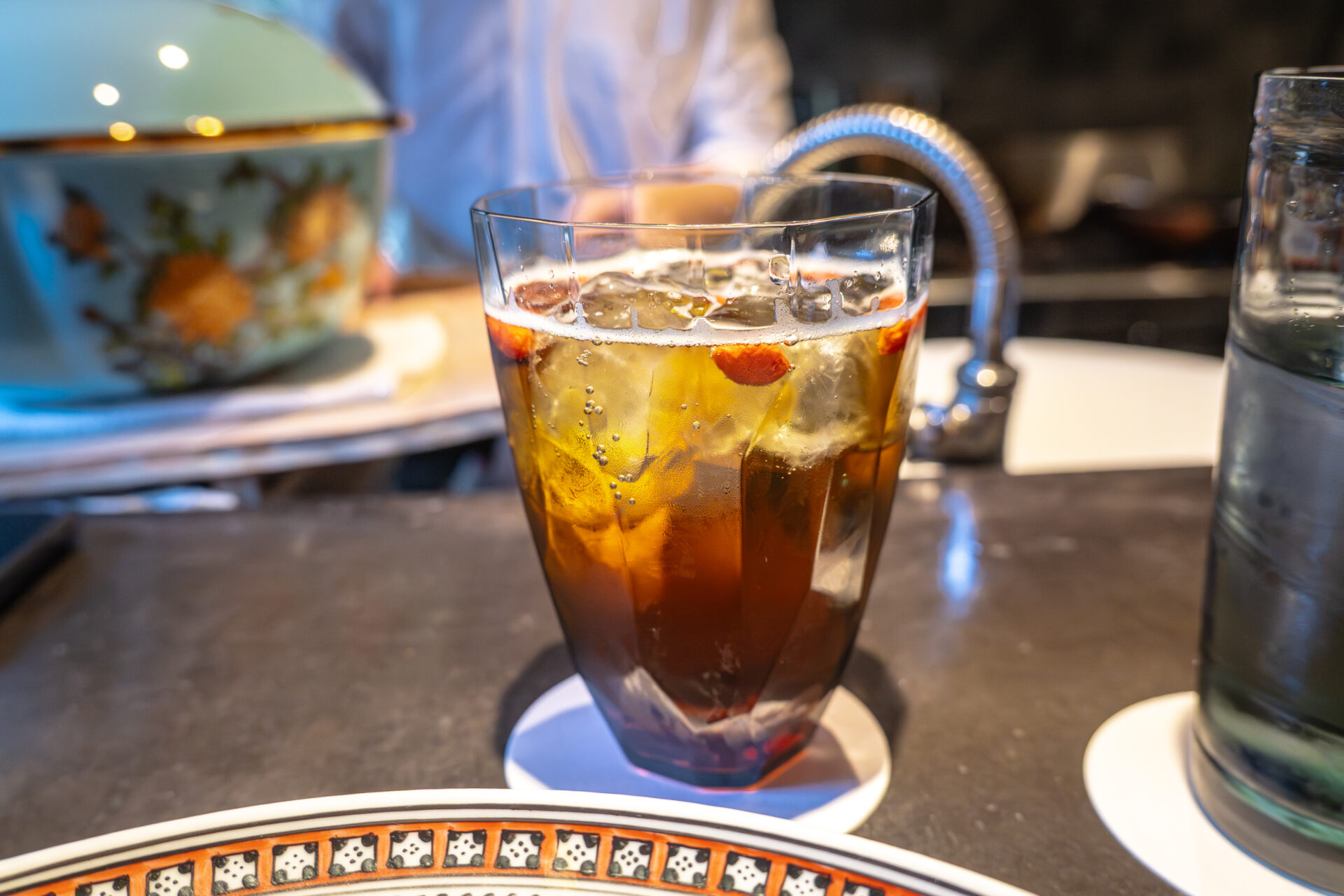
Dishes Tasted
紅棗海螺炖(Double-Boiled Soup of Red Dates and Sea Snail)
The meal began with a gently simmered consommé of local chicken, layered with the sweetness of red dates (hongzao), tender sea snail, and warming slices of ginger.
The broth was delicately clear and soothing, its warmth slowly expanding through the body—quietly awakening the appetite for what was to come.
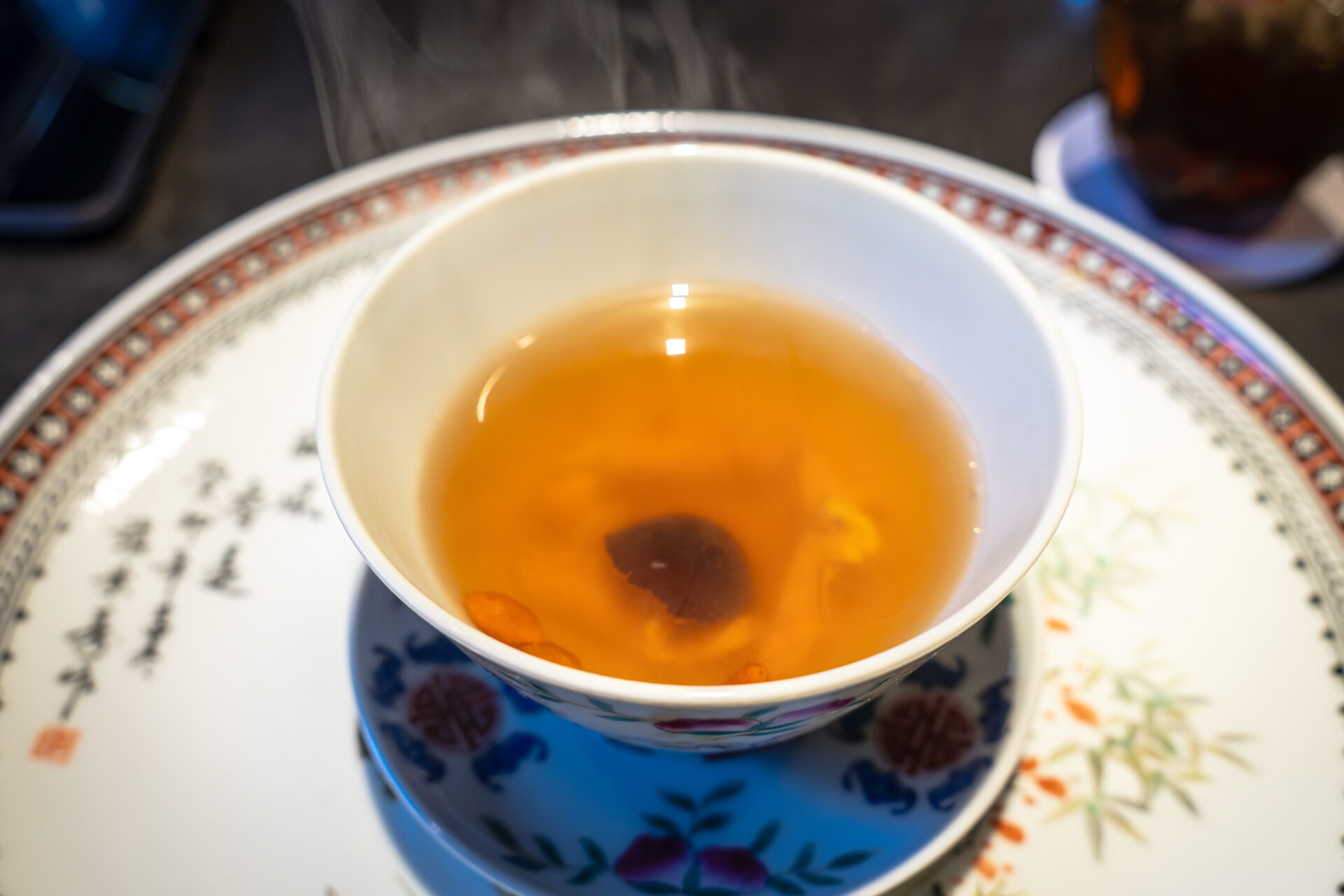
錦繍十二景(Assorted Appetizers “Twelve Views of Embroidery”)
A signature offering at Ninshōrō: an appetizer platter that felt like a miniature course in itself, showcasing a rich variety of ingredients and techniques.
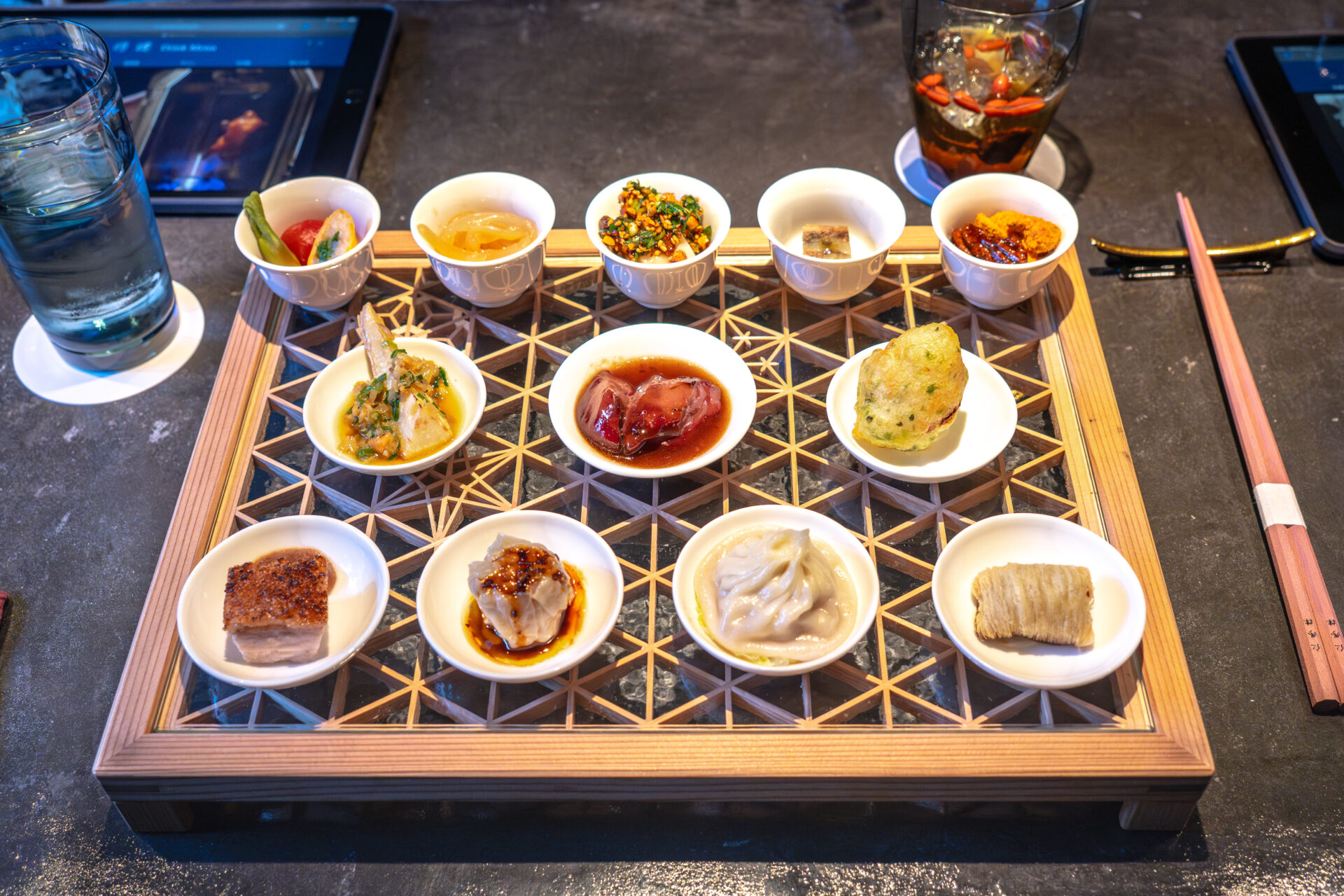
Selections included:
-
Rolled baby tomato and Chinese cabbage
-
Lightly pickled tara no me (angelica sprouts)
-
Seasoned jellyfish
-
Steamed chicken
-
Soft-shelled turtle aspic
-
Sweet-simmered pecan
-
Spiced cashew nuts
-
Bamboo shoots layered with umami from dried shrimp and pickled mustard greens
-
Cantonese-style char siu chicken liver
-
Shaoxing-marinated scallop fried in a Chinese batter with aosa seaweed
-
Crispy roast pork belly with plum sauce
-
Wild boar shumai
-
Hairy crab xiaolongbao
-
And a Shanghai-style meat pie (Sūpíng Tè Tā Ā Lóng) with duck and radish filling
Each item offered contrast in texture, aroma, and temperature, all prepared with refinement and yet with an assertive individuality.
Far beyond a typical starter, this was a dramatic opening act.

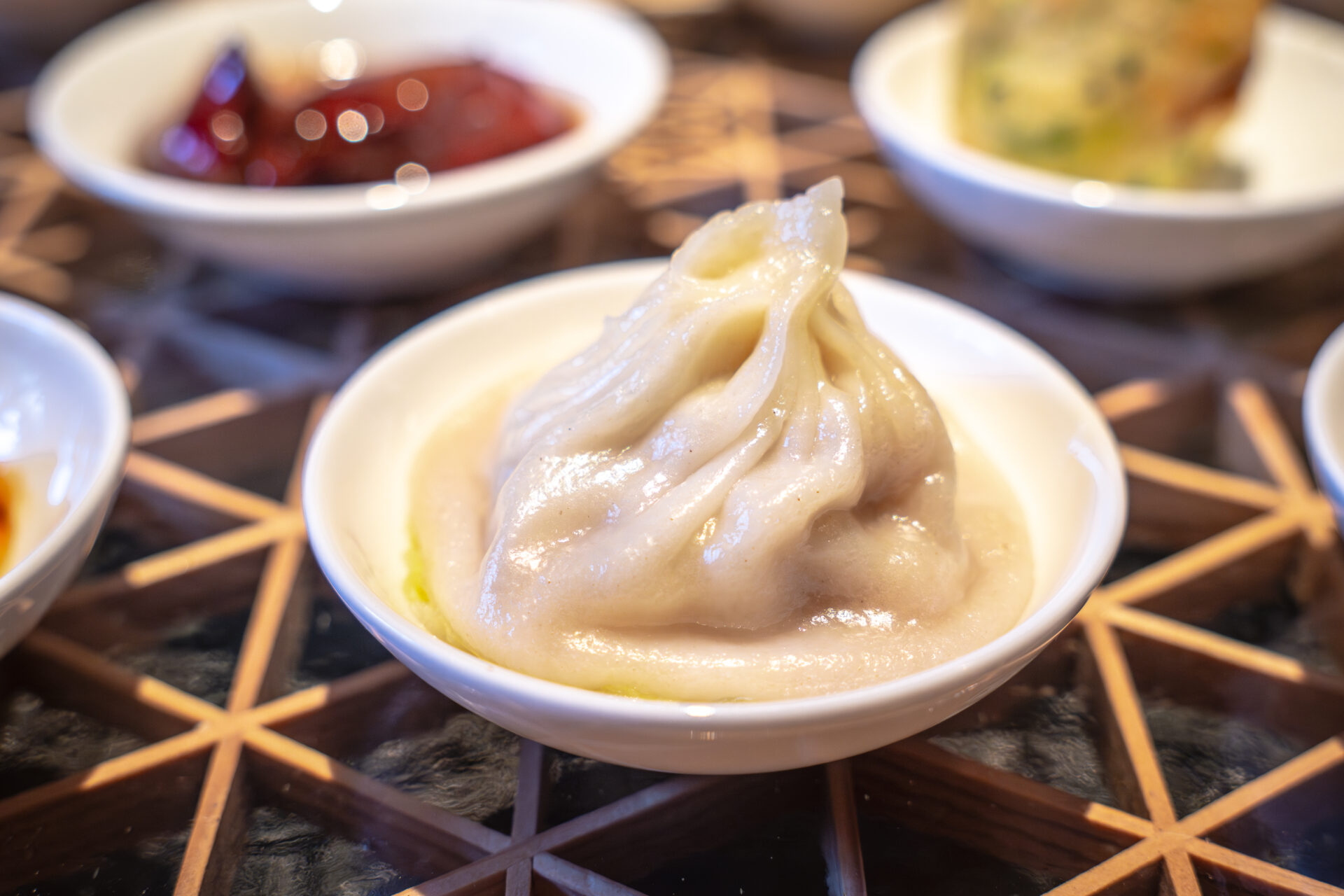
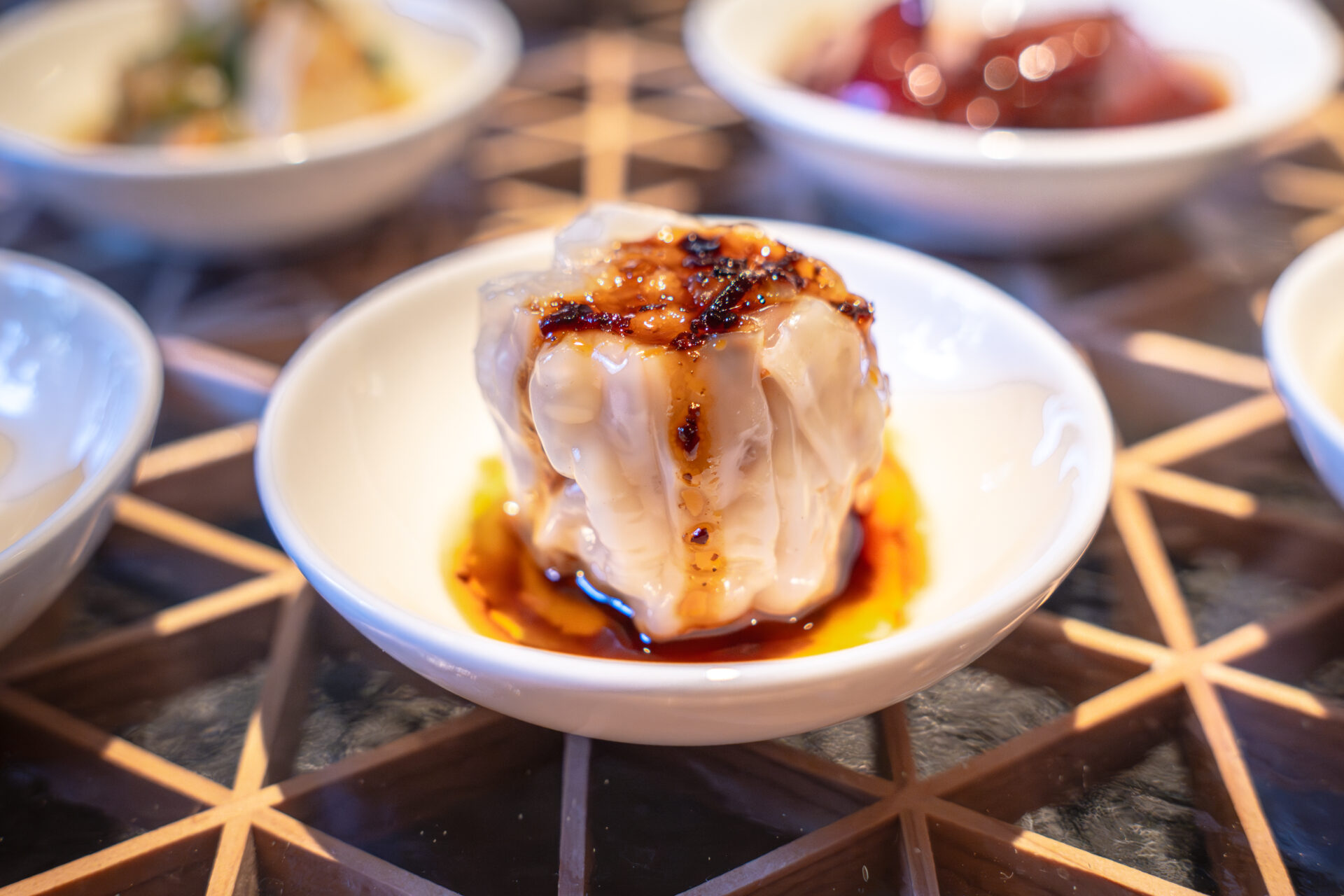
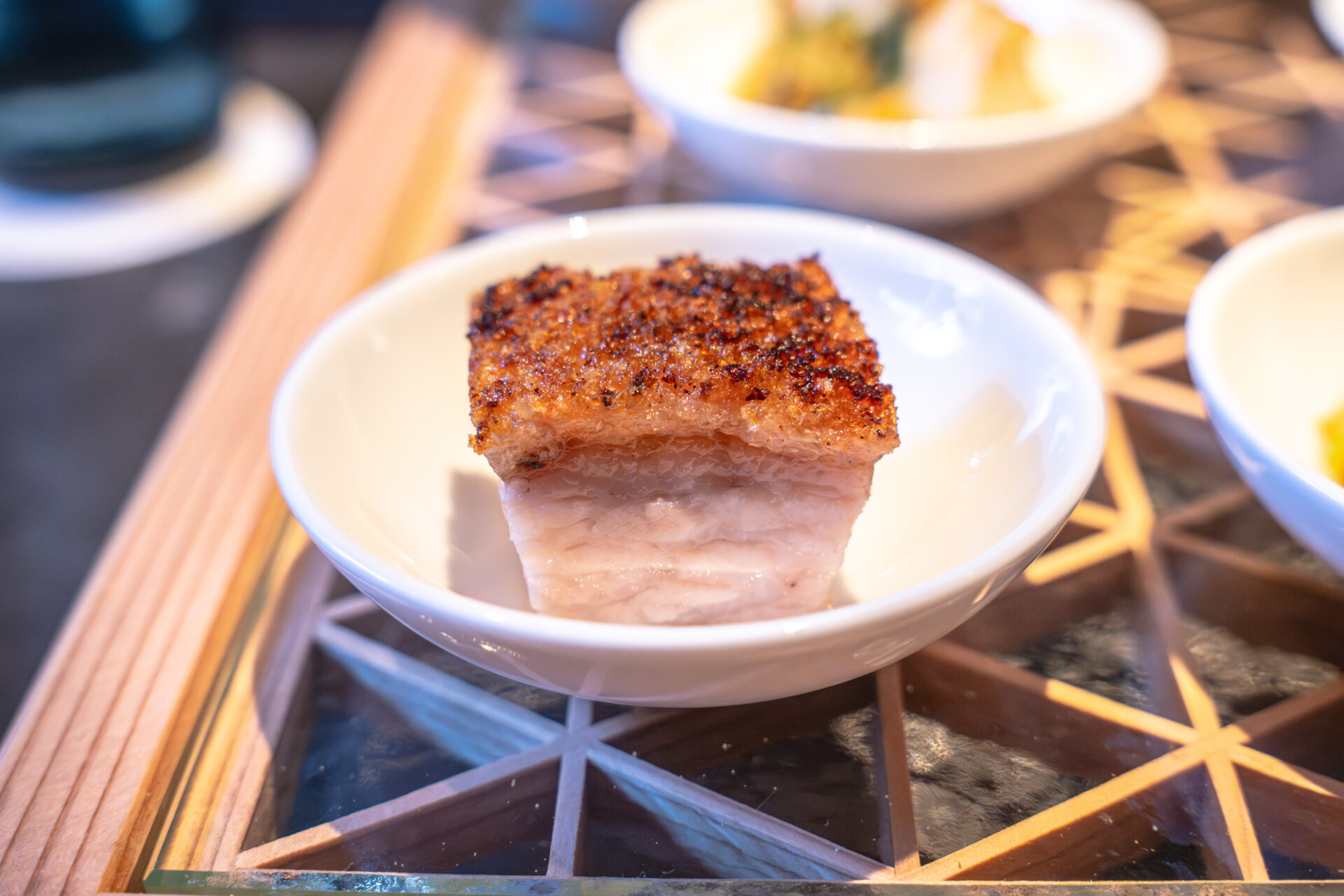
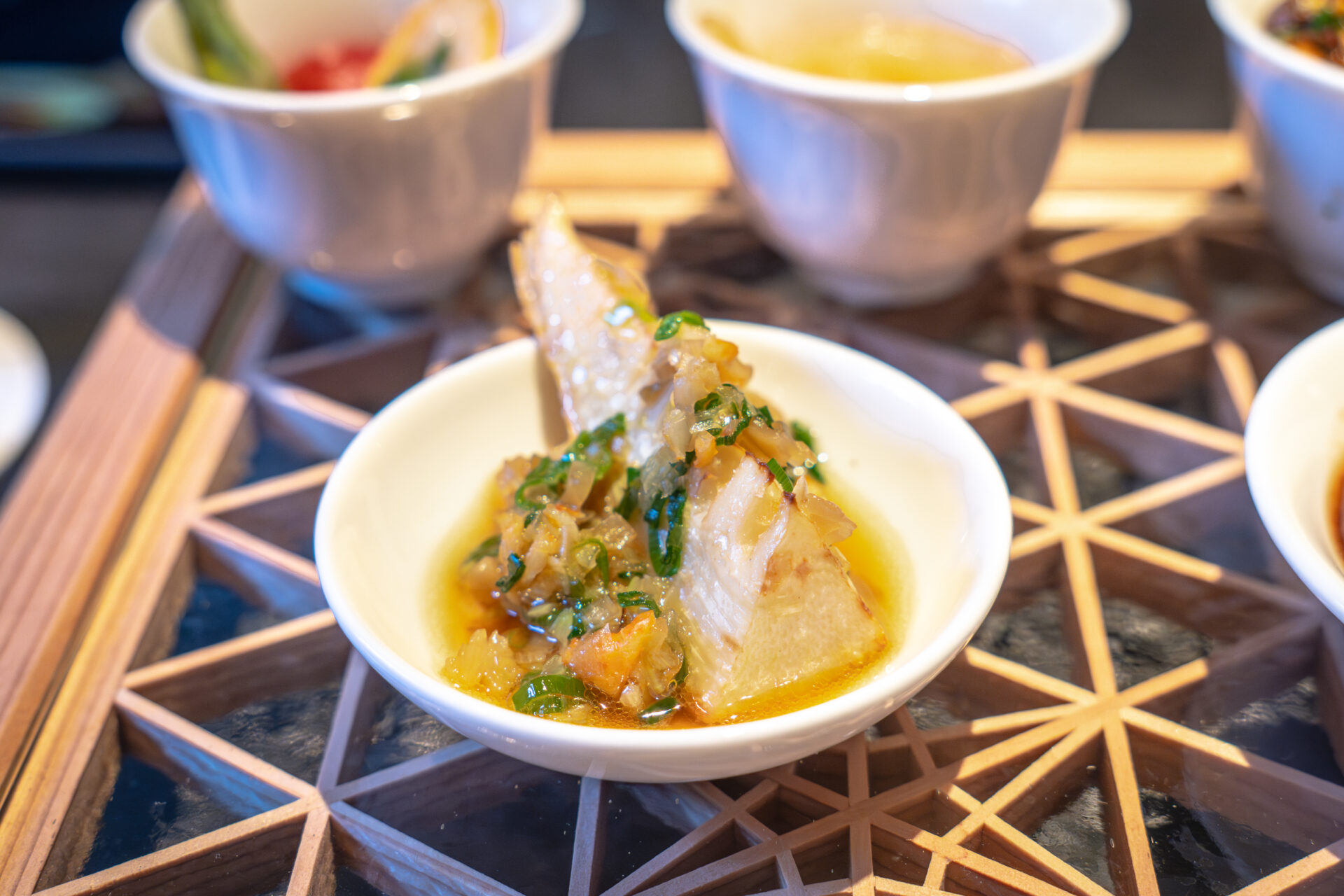
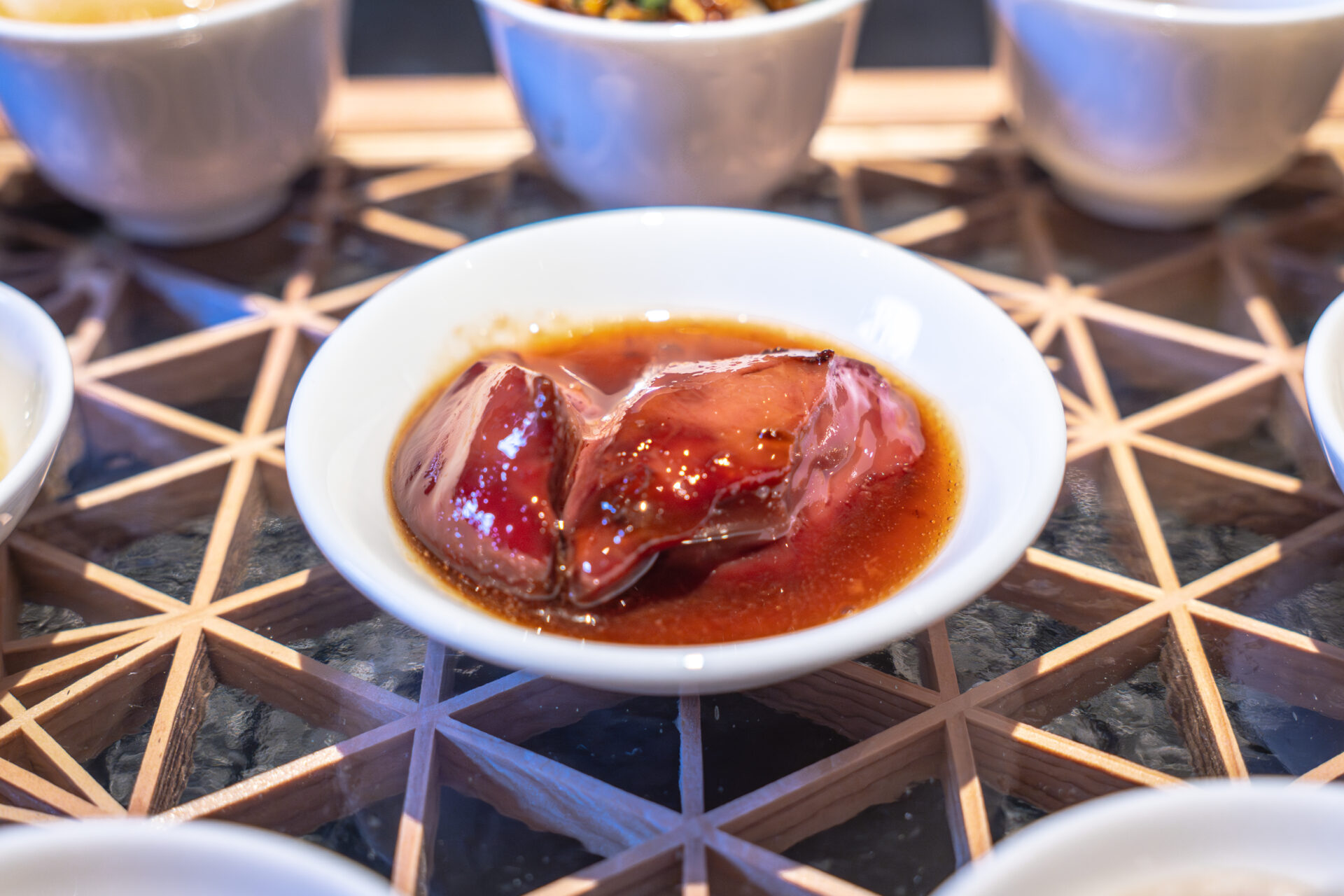
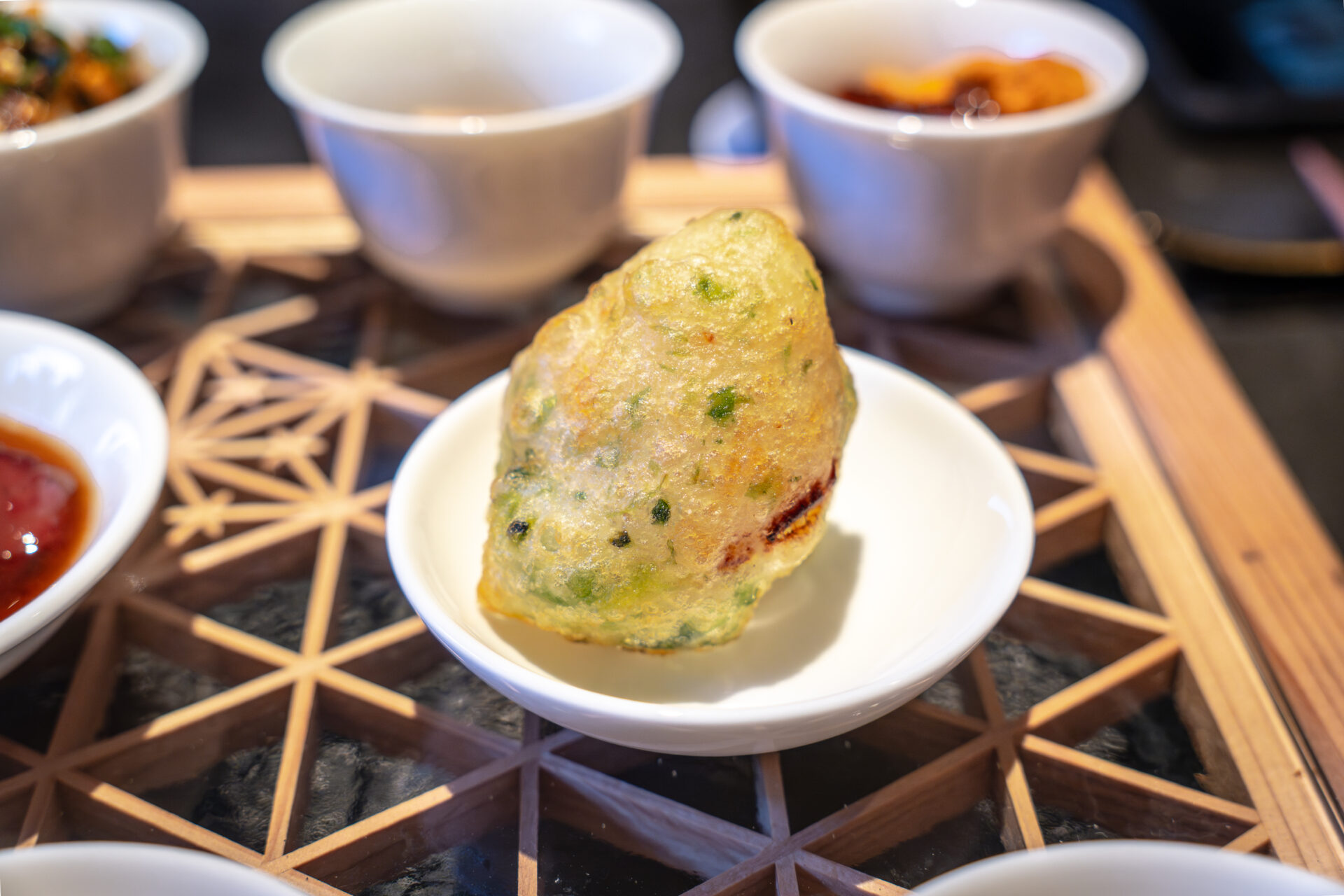
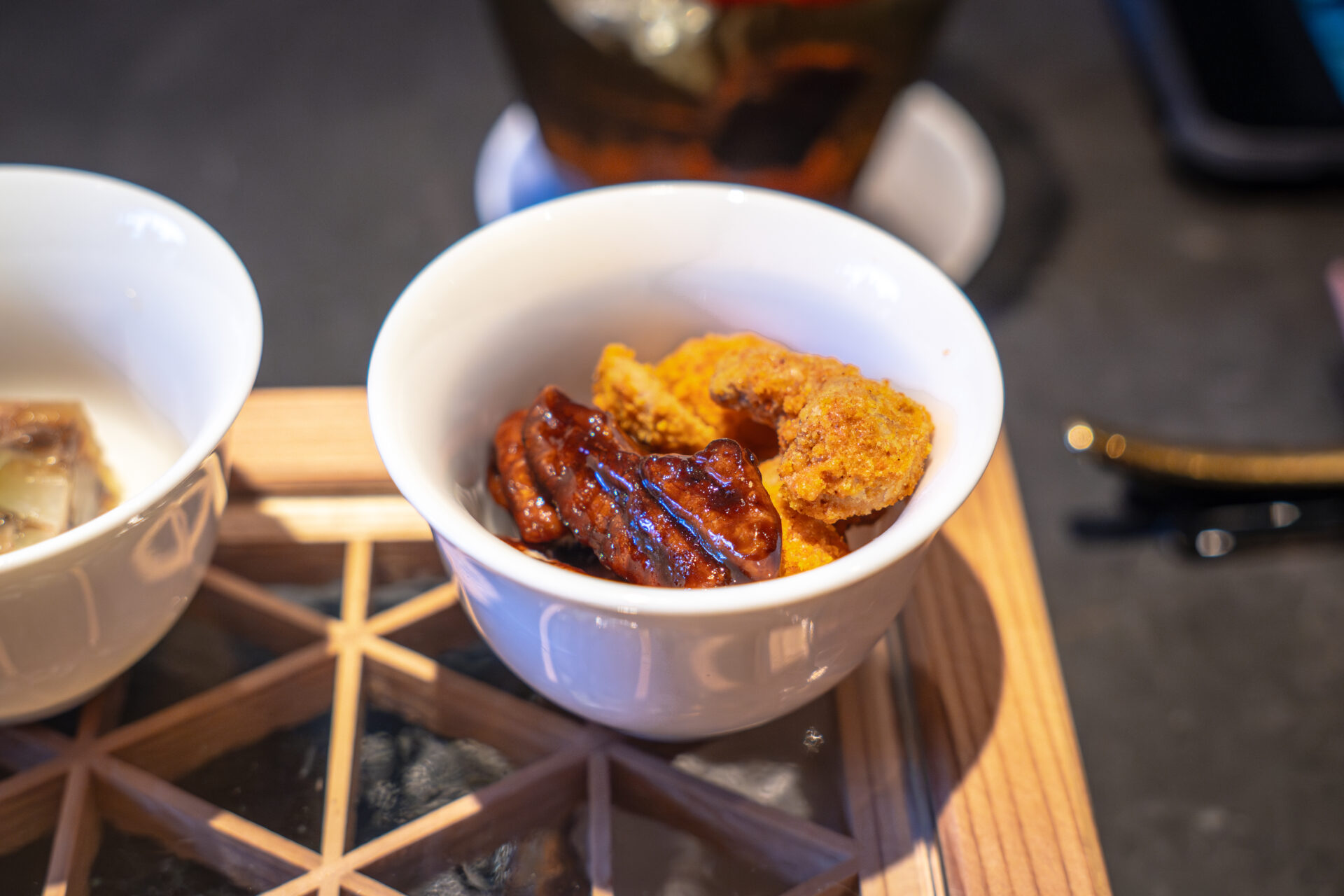
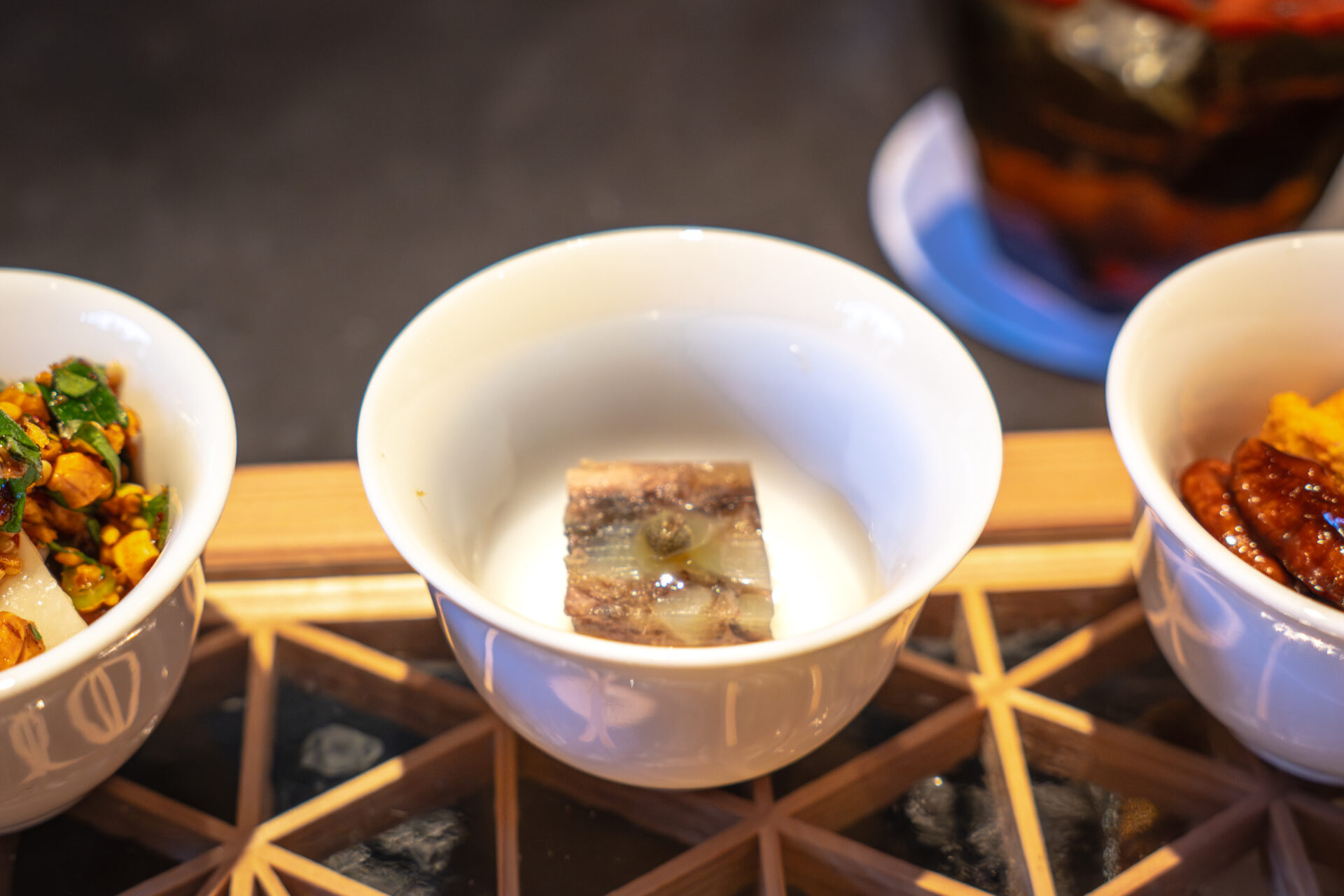
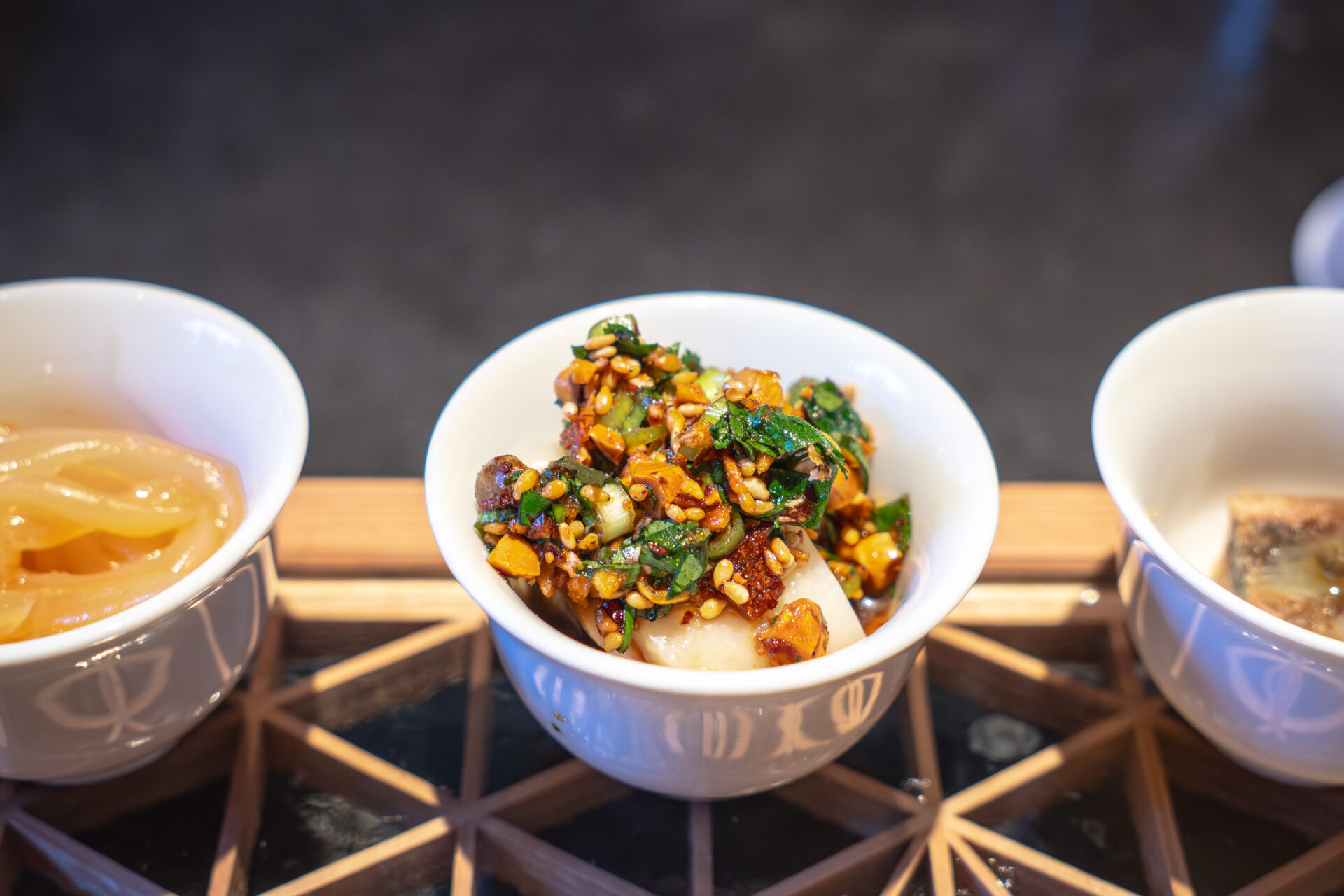
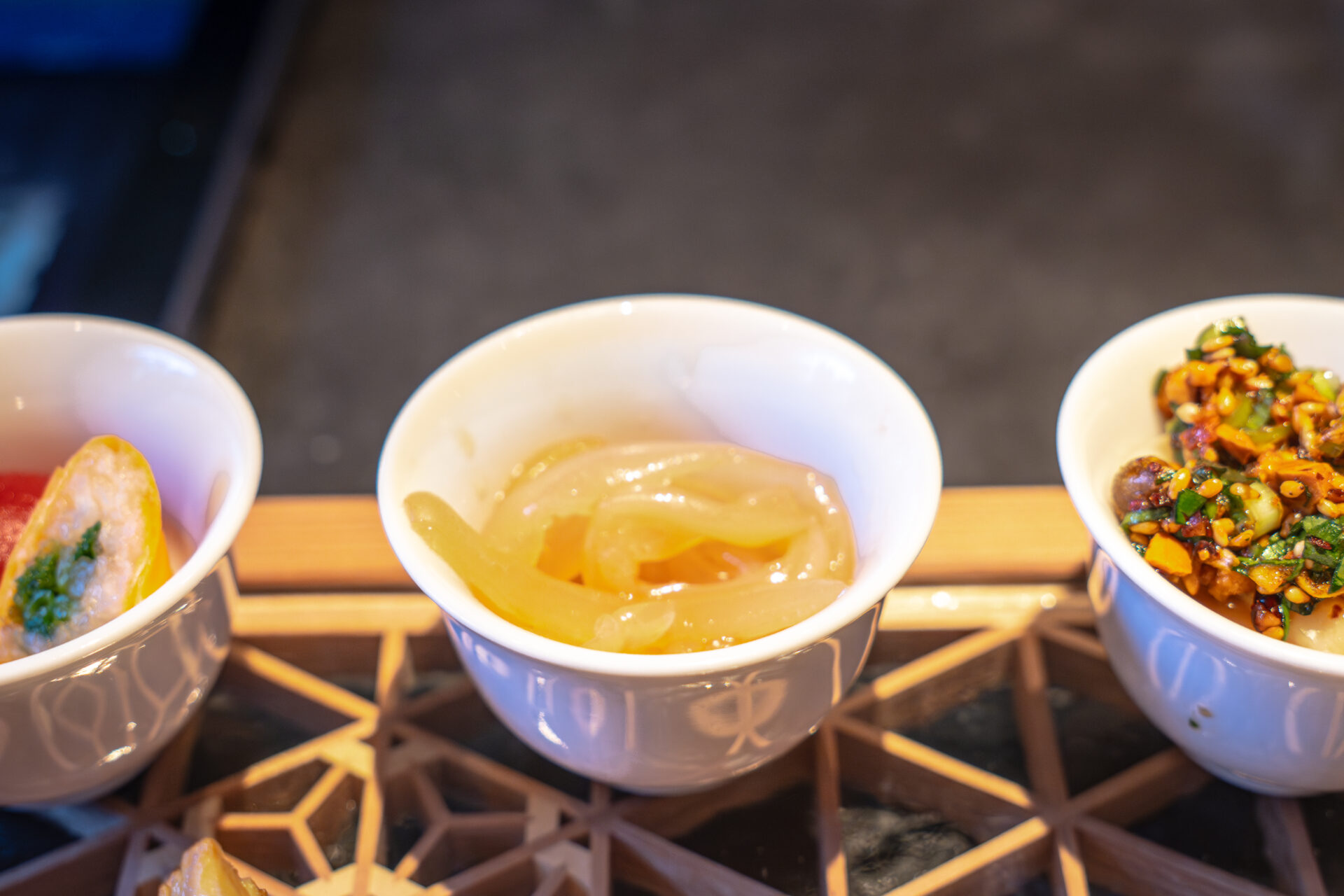
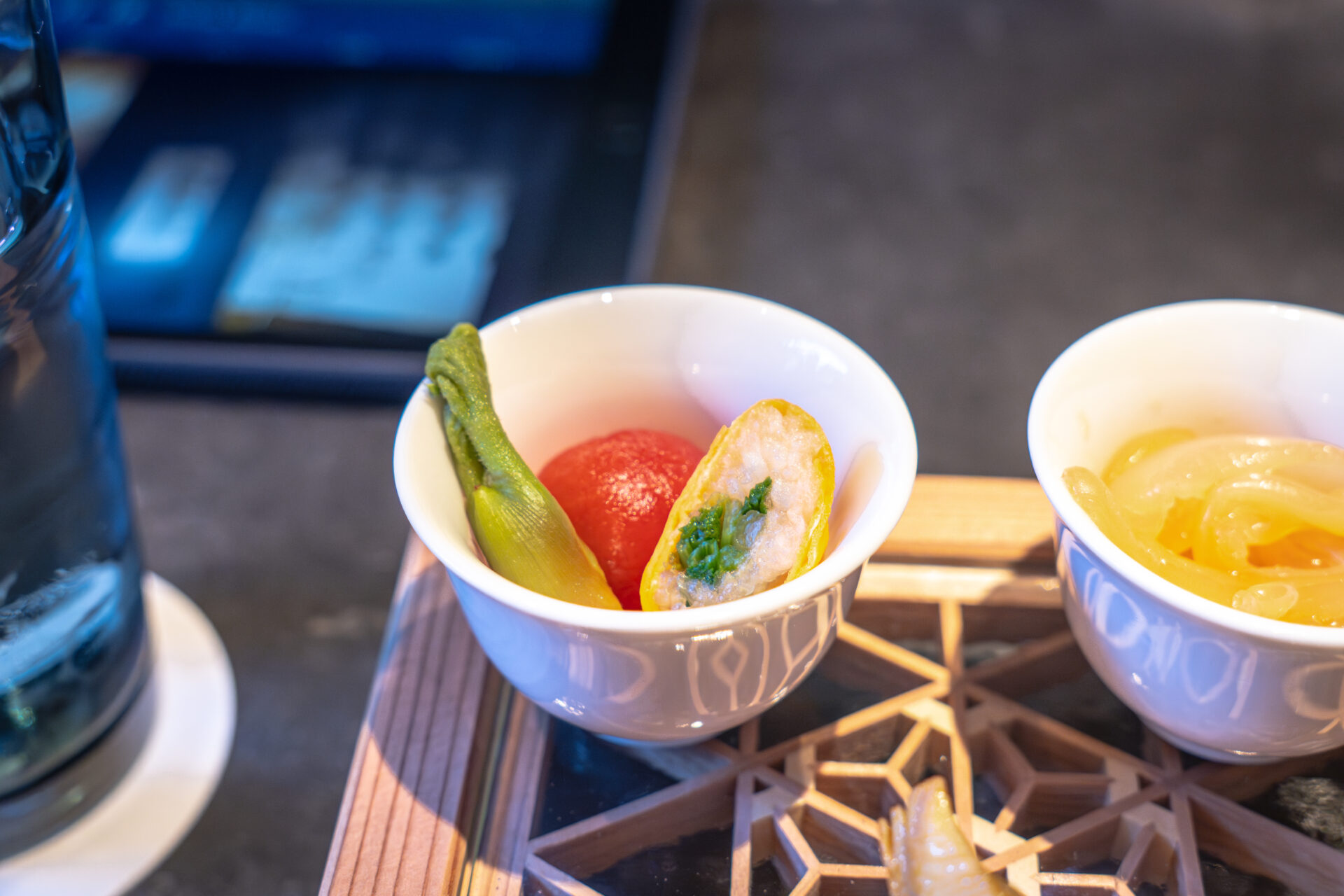
翡翠扒撻翅(Braised Shark Fin with Jade Sauce)
At the center of the course arrived silky, delicately shredded fin from the shortfin mako shark, gently braised to fall apart in the mouth. It was served in a savory broth of local chicken and Jinhua ham, deep in umami.
Around the fin was a soft, lightly sweet purée of “thin beans” (possibly mung or edamame) enriched with ham. The flavors harmonized beautifully, leaving a refined aftertaste that lingered.
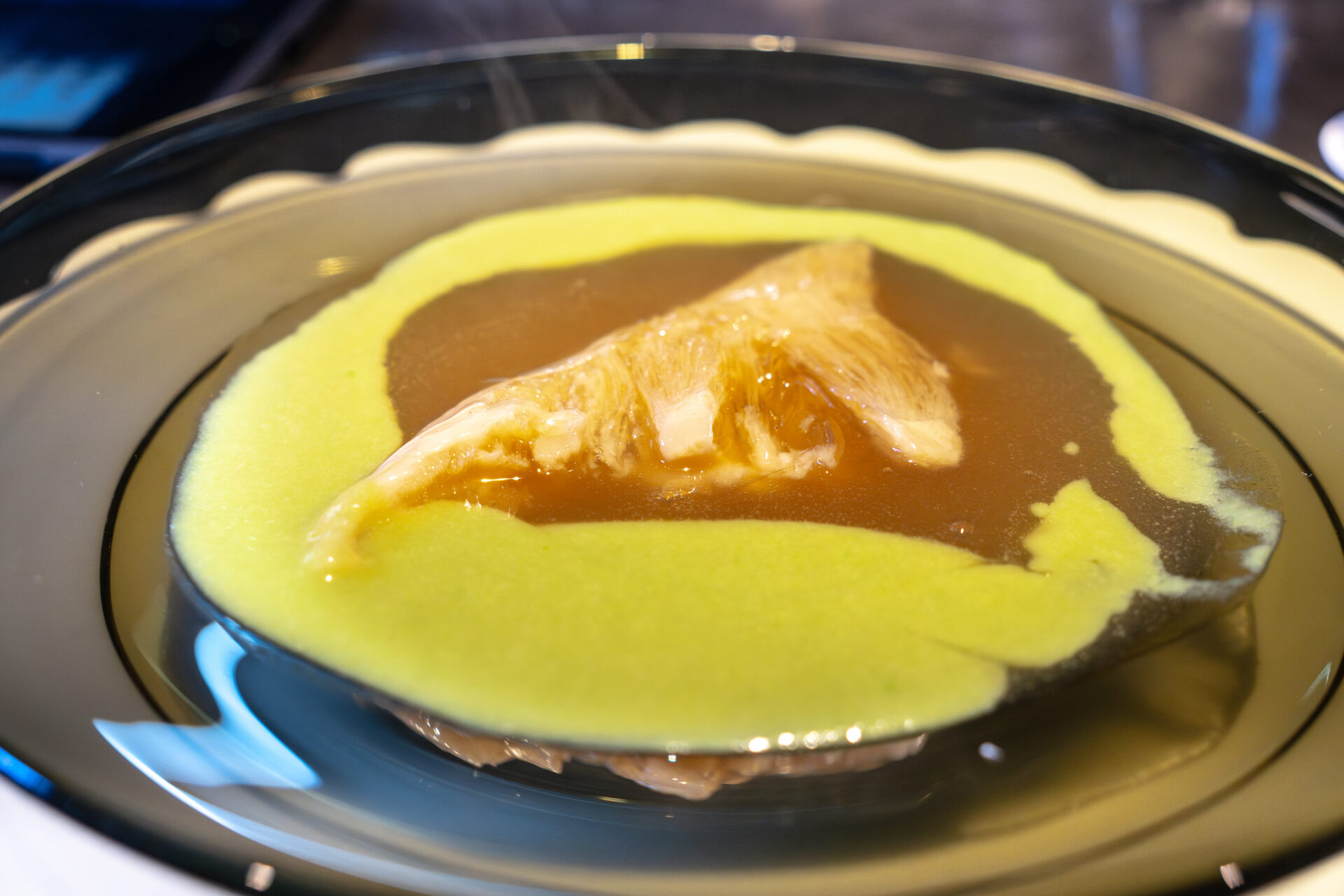
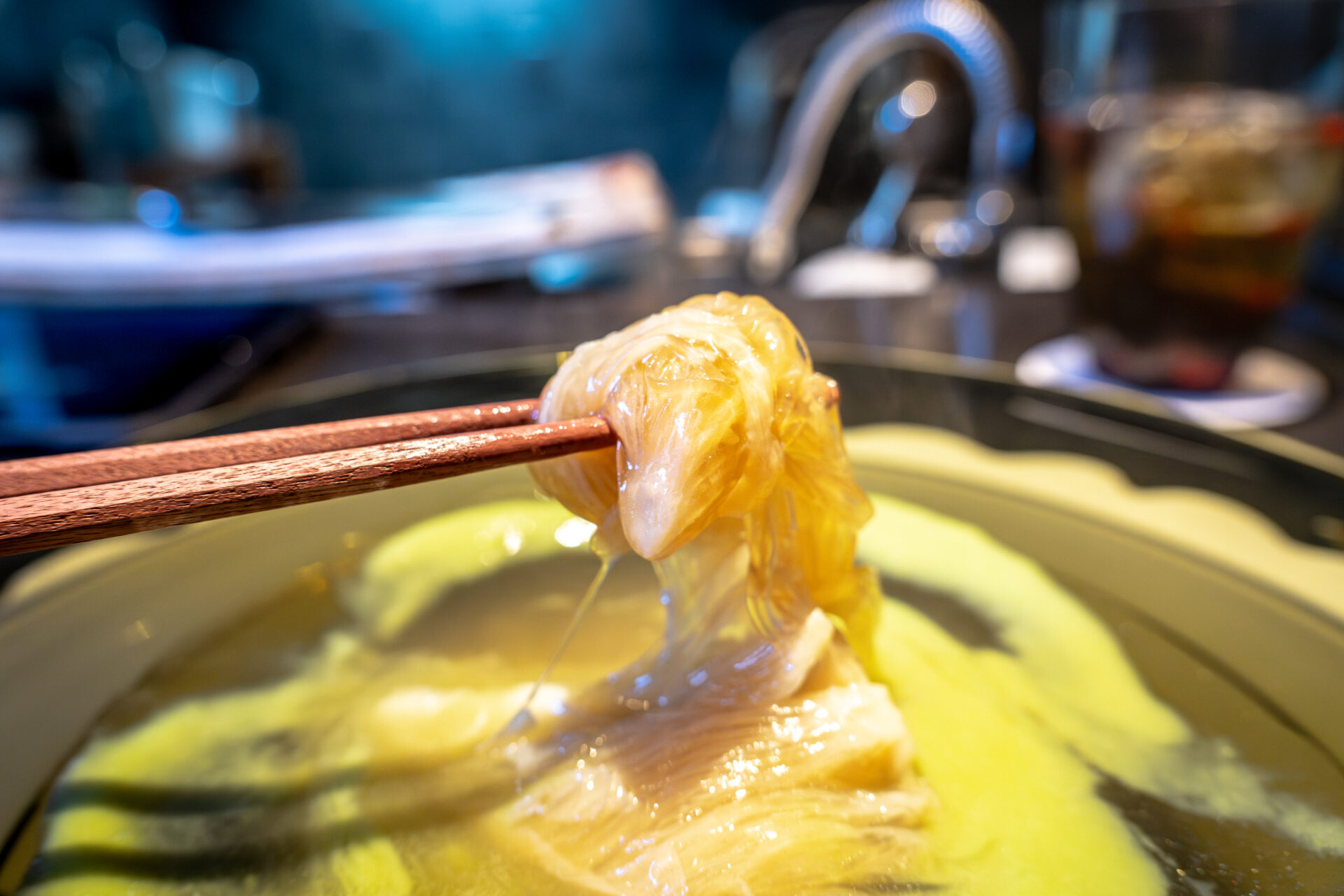
石岐燻乳鴿(Smoked Pigeon – Shiqi Style)
From Shiqi, Guangdong, famed for its tender pigeons, this dish featured young squab roasted in the Cantonese style, then gently smoked using the “Xuncha” technique.
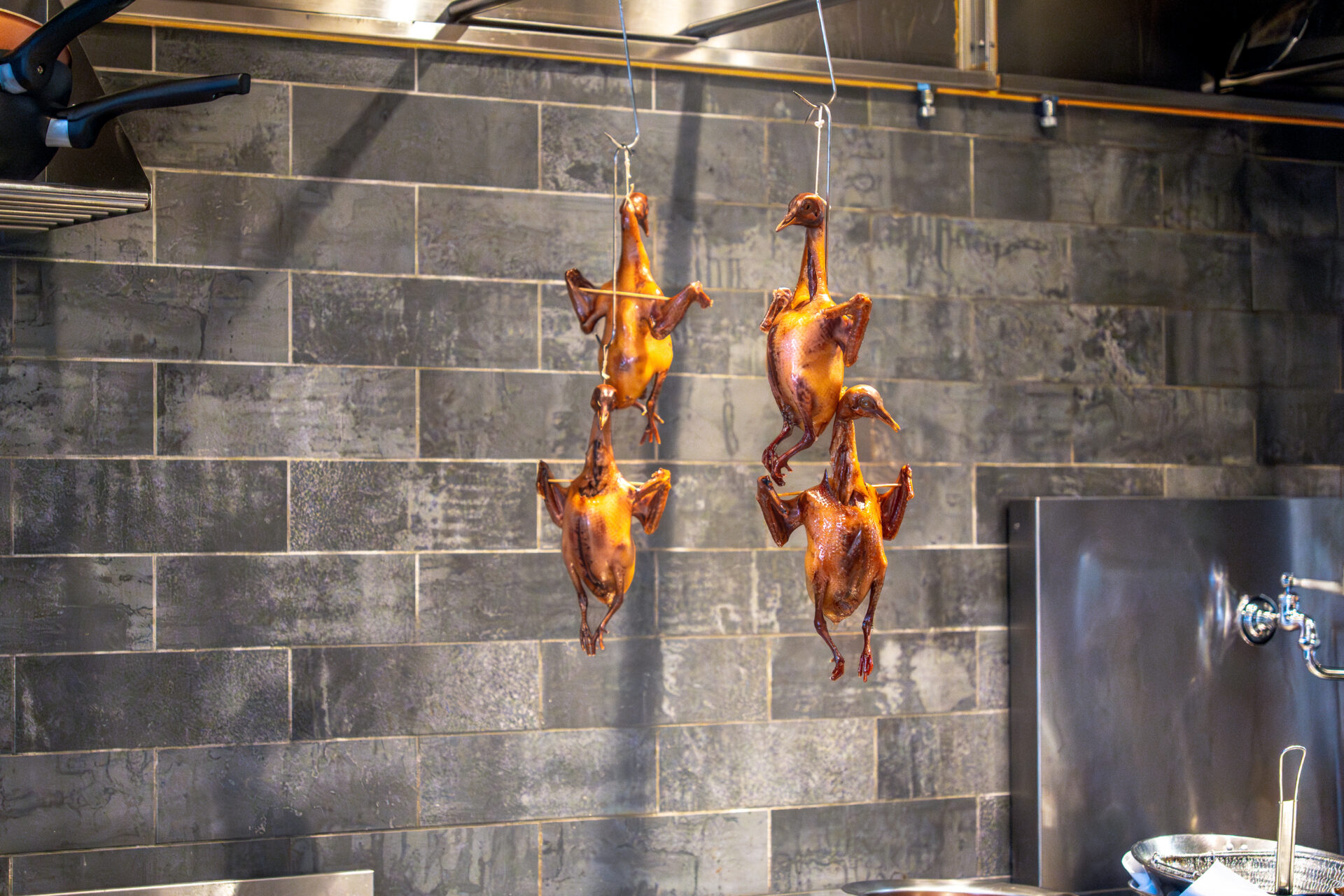
For the aromatic smoke, jasmine rice, rock sugar, and tea leaves were used—resulting in a layered profile combining roastiness and mellow sweetness.
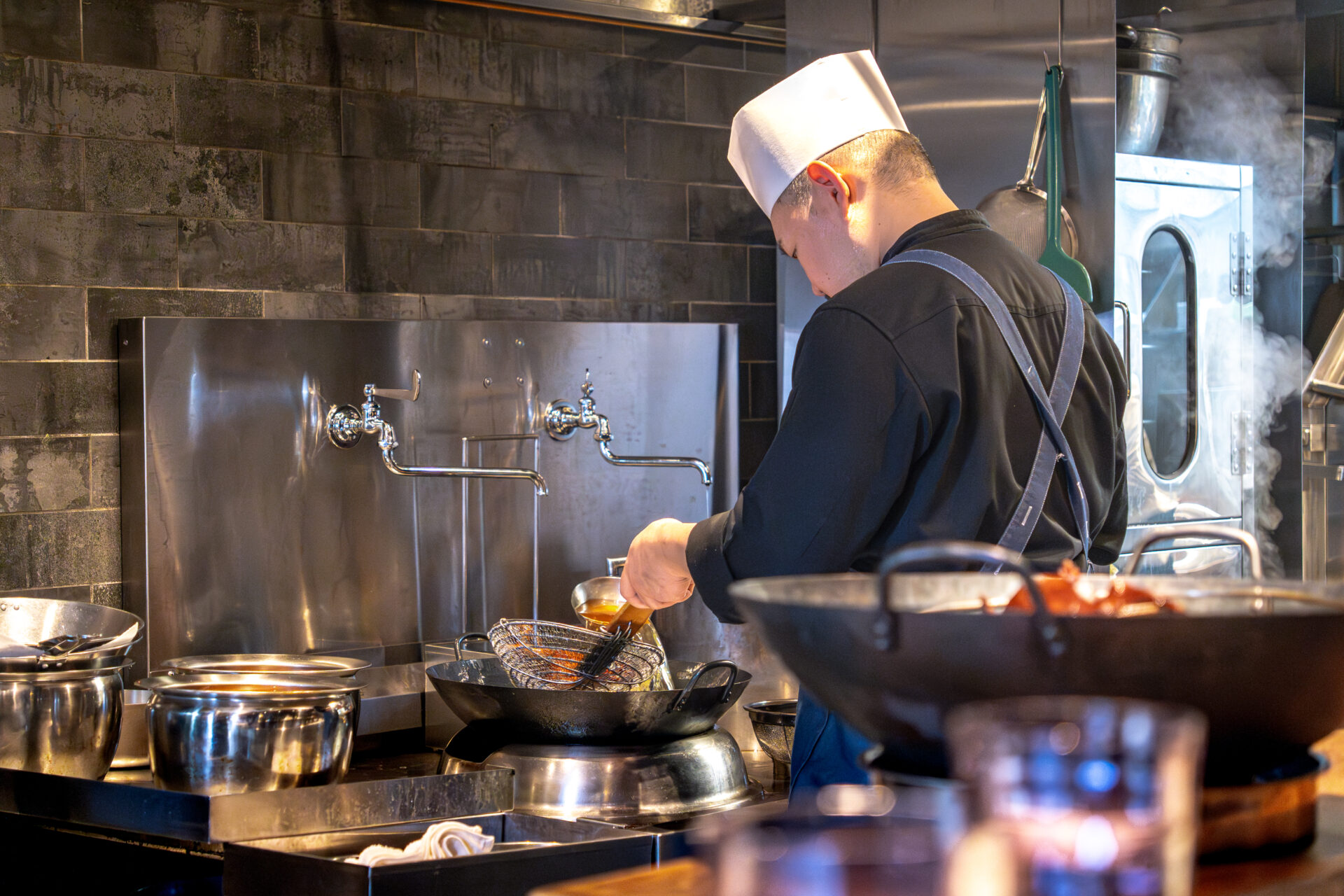
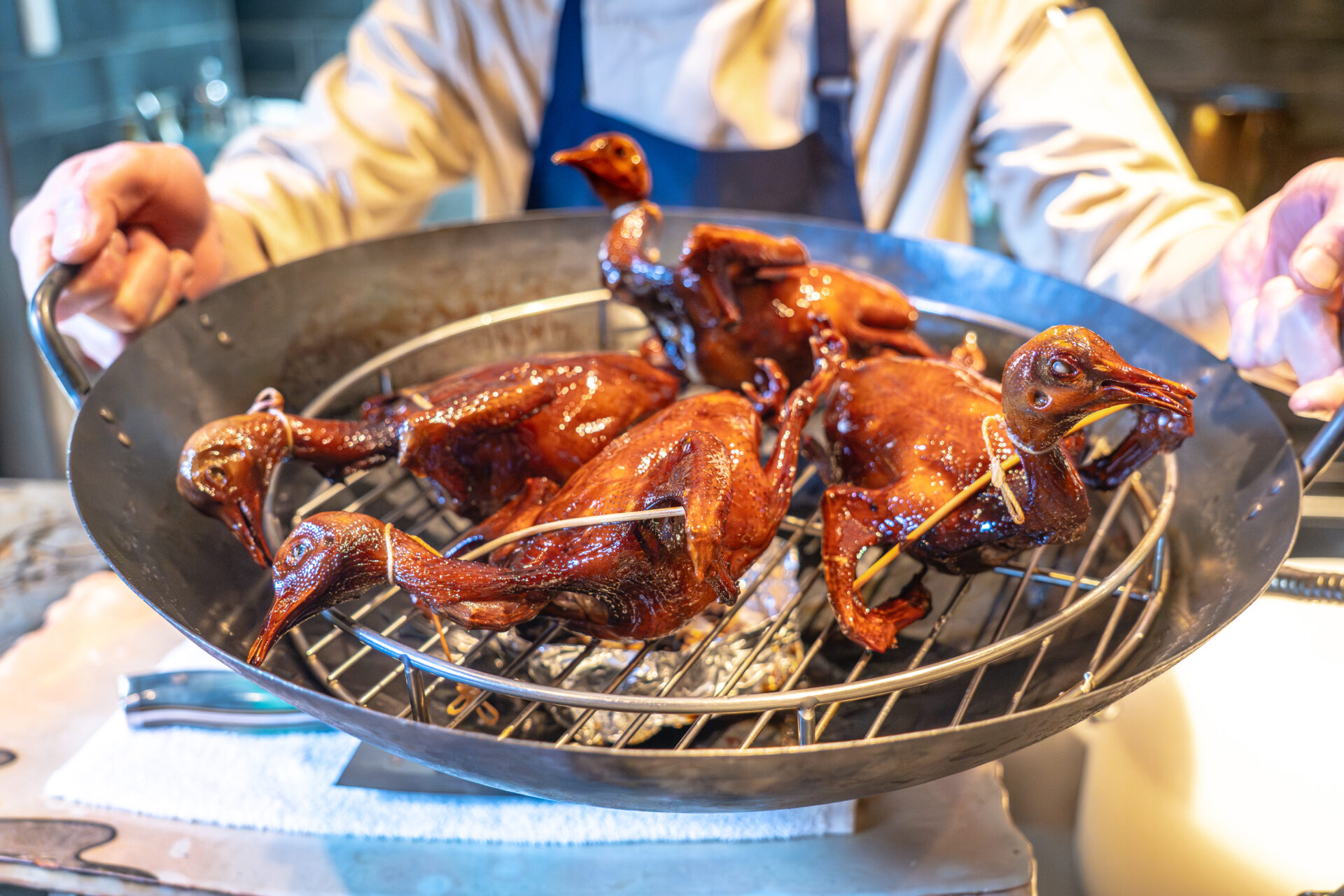
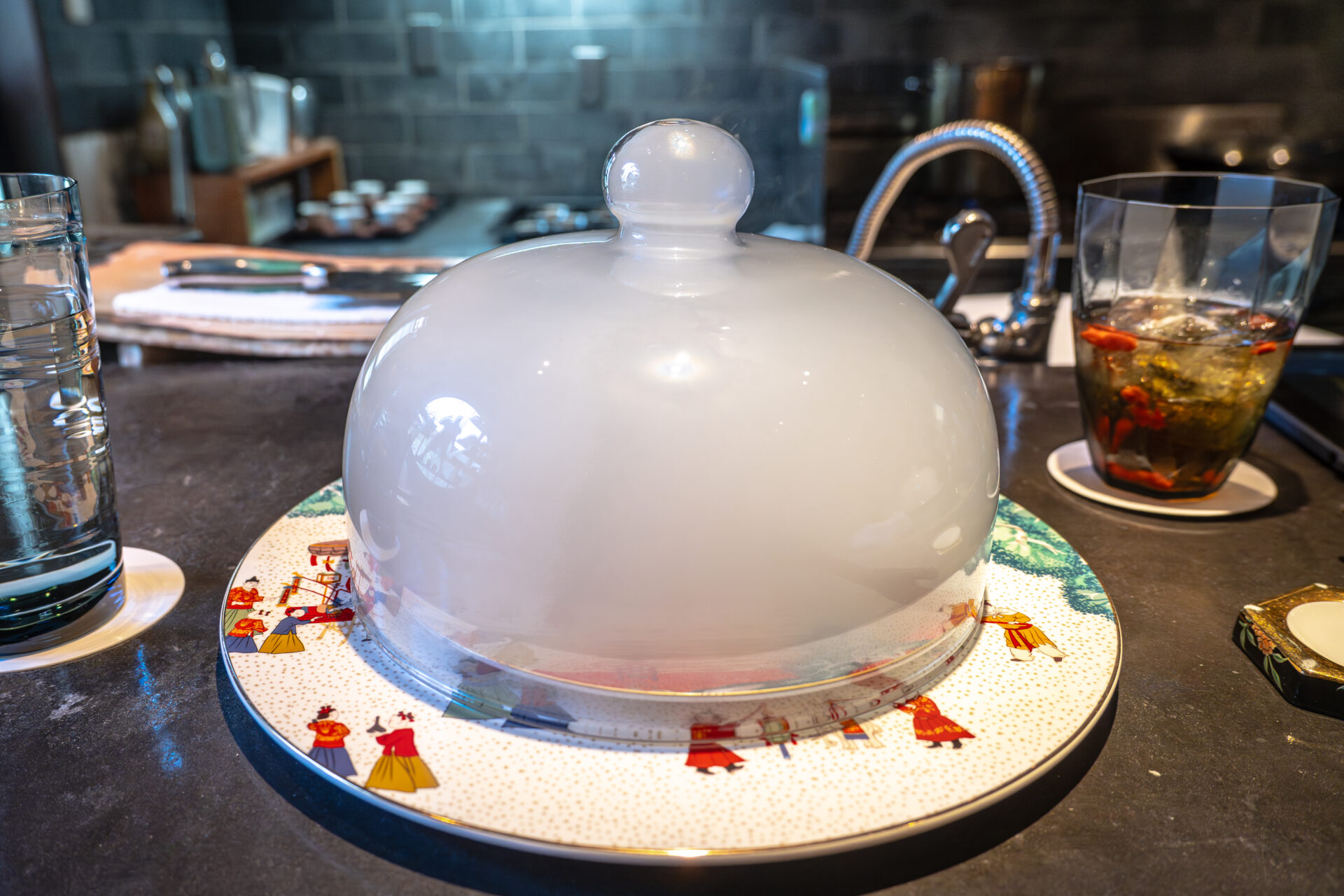
The skin was crisp, the meat succulent, and the interplay of technique and aroma made this small dish quietly powerful.
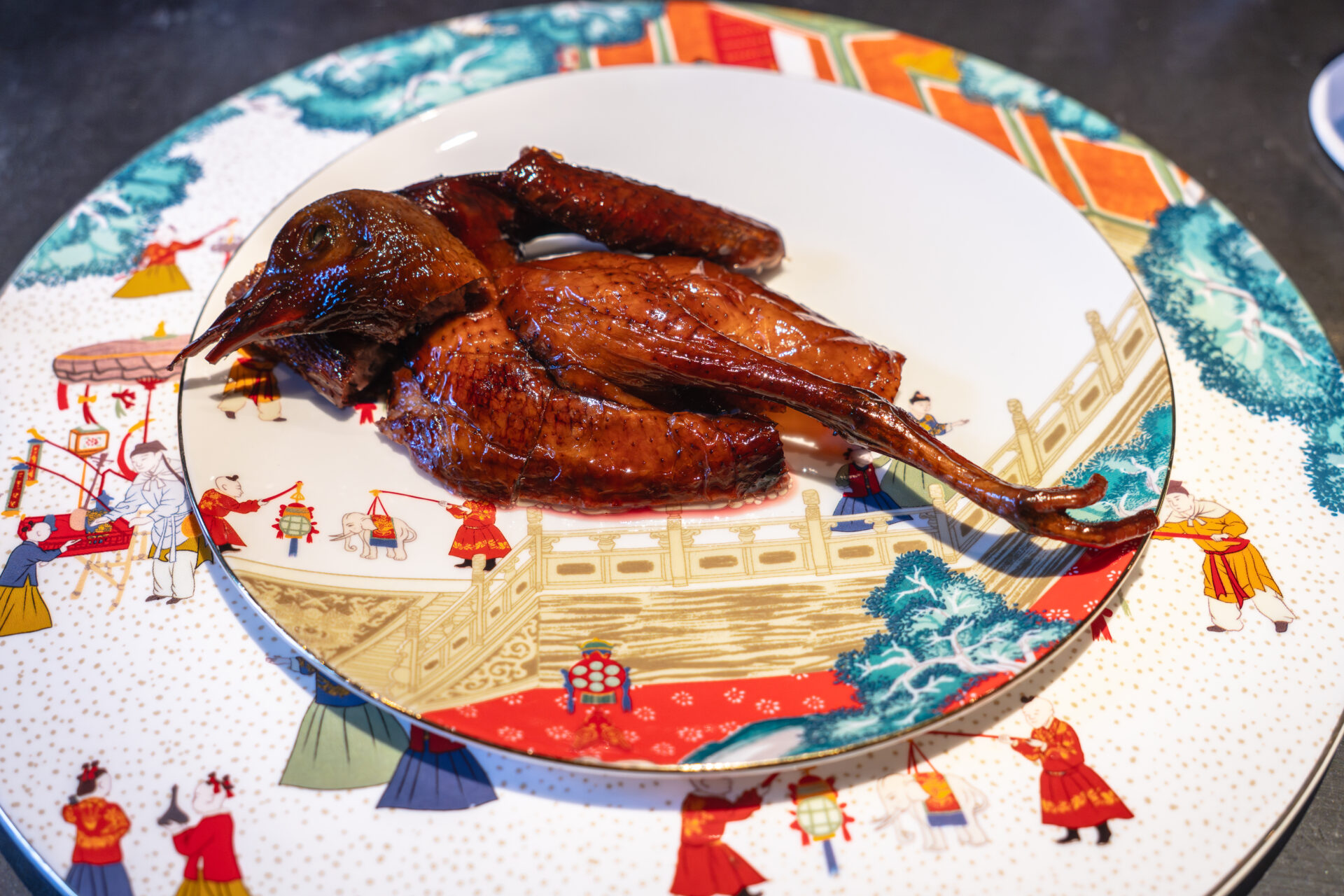
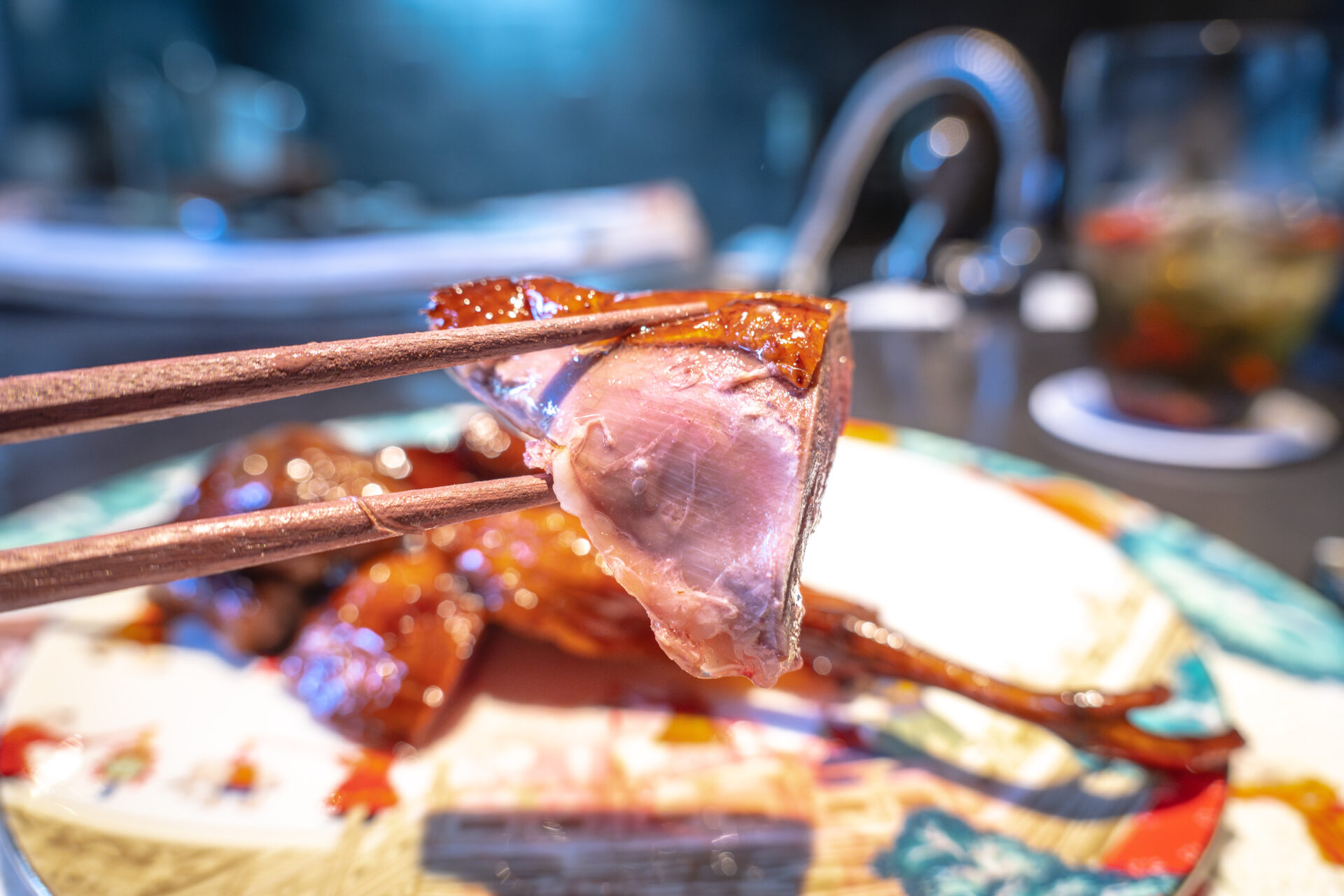
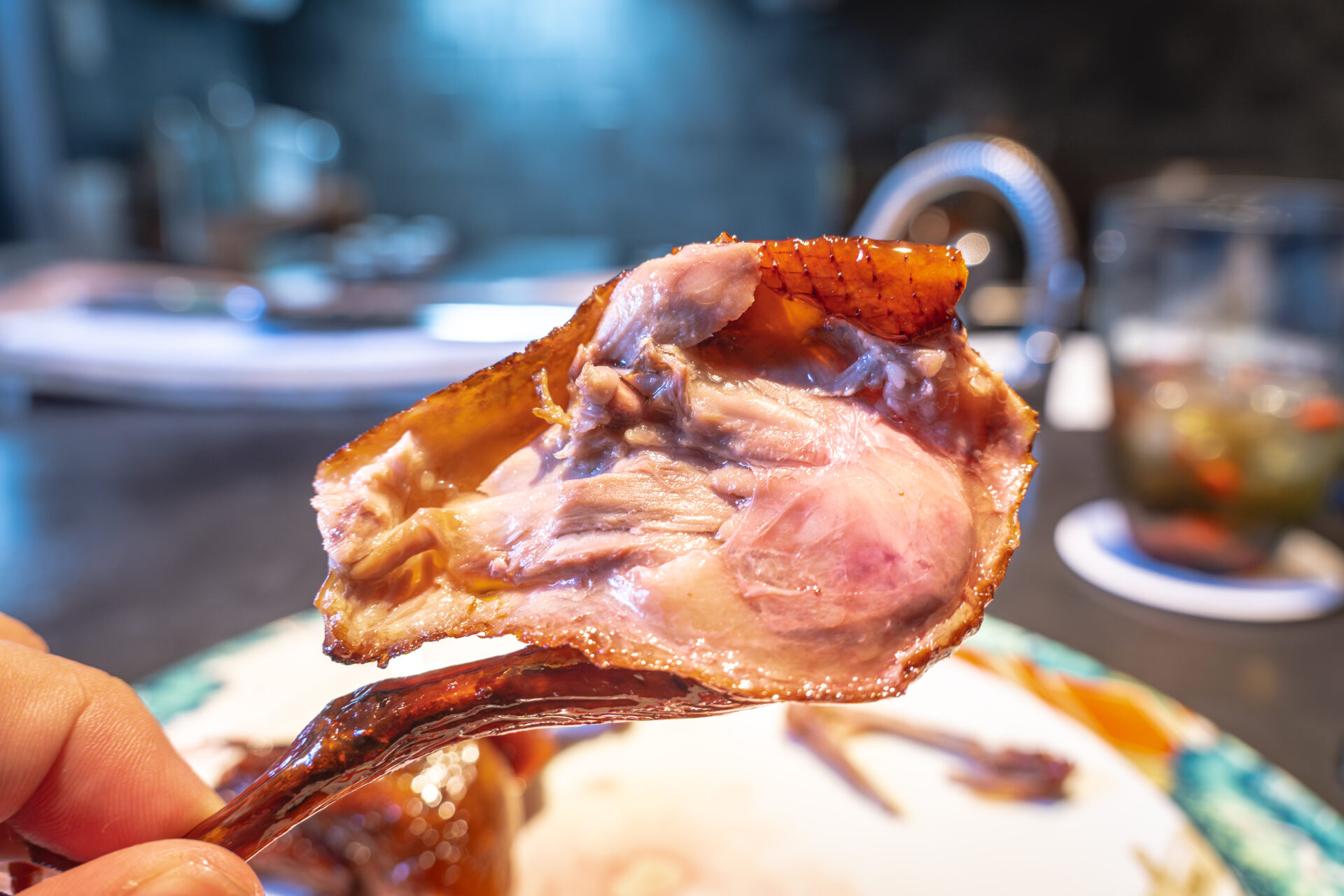
龍井網油挟(Lobster and Asparagus Wrapped in Caul Fat with Dragon Well Tea)
This delicately aromatic course was built on a broth of cold-infused Dragon Well (Lóngjǐng) tea and Jinhua ham.
Tender asparagus was rolled and wrapped in caul fat with lobster, briefly flash-fried to preserve both crispness and fragrance.
The finishing touch was a kind of “tea-infused aromatic oil”—tea leaves soaked in vodka overnight, blended with oil and gently heated to remove alcohol, leaving behind a concentrated tea essence.
Beneath the dish, a small fried whitefish added a surprise crunch.
Every aspect—from the fire to the aroma—was precisely calibrated.
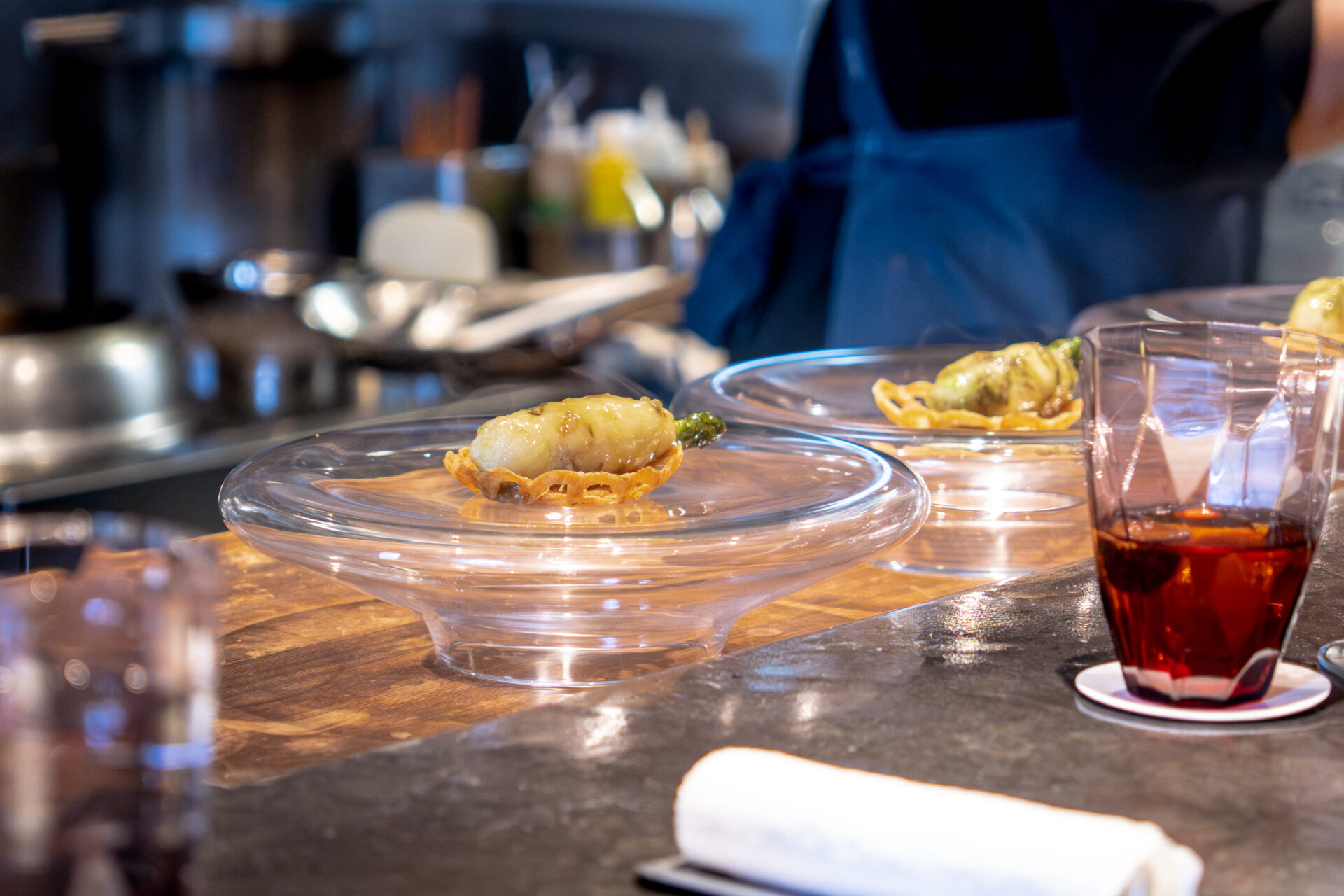
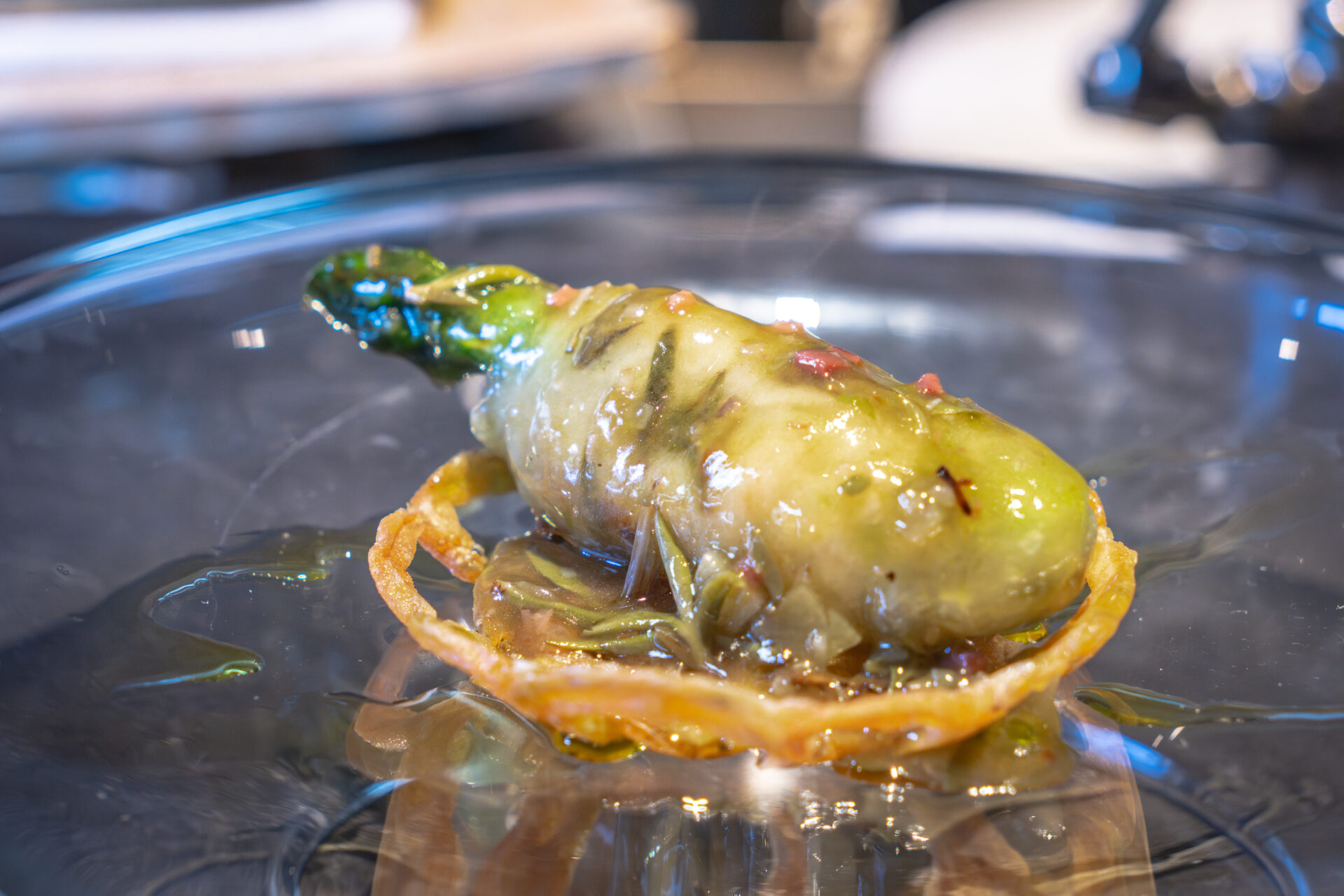
星州焗龍蝦(Singapore-Style Chili Lobster)
A boldly satisfying dish of lobster served in its shell, glazed with a Singaporean chili sauce.
The body was cooked as a whole segment, while the meat from the head was gently extracted and folded into the sauce, which blended egg richness and coconut sweetness to complement the lobster’s natural flavor.
It was a balance of boldness and elegance, both hearty and harmonious.
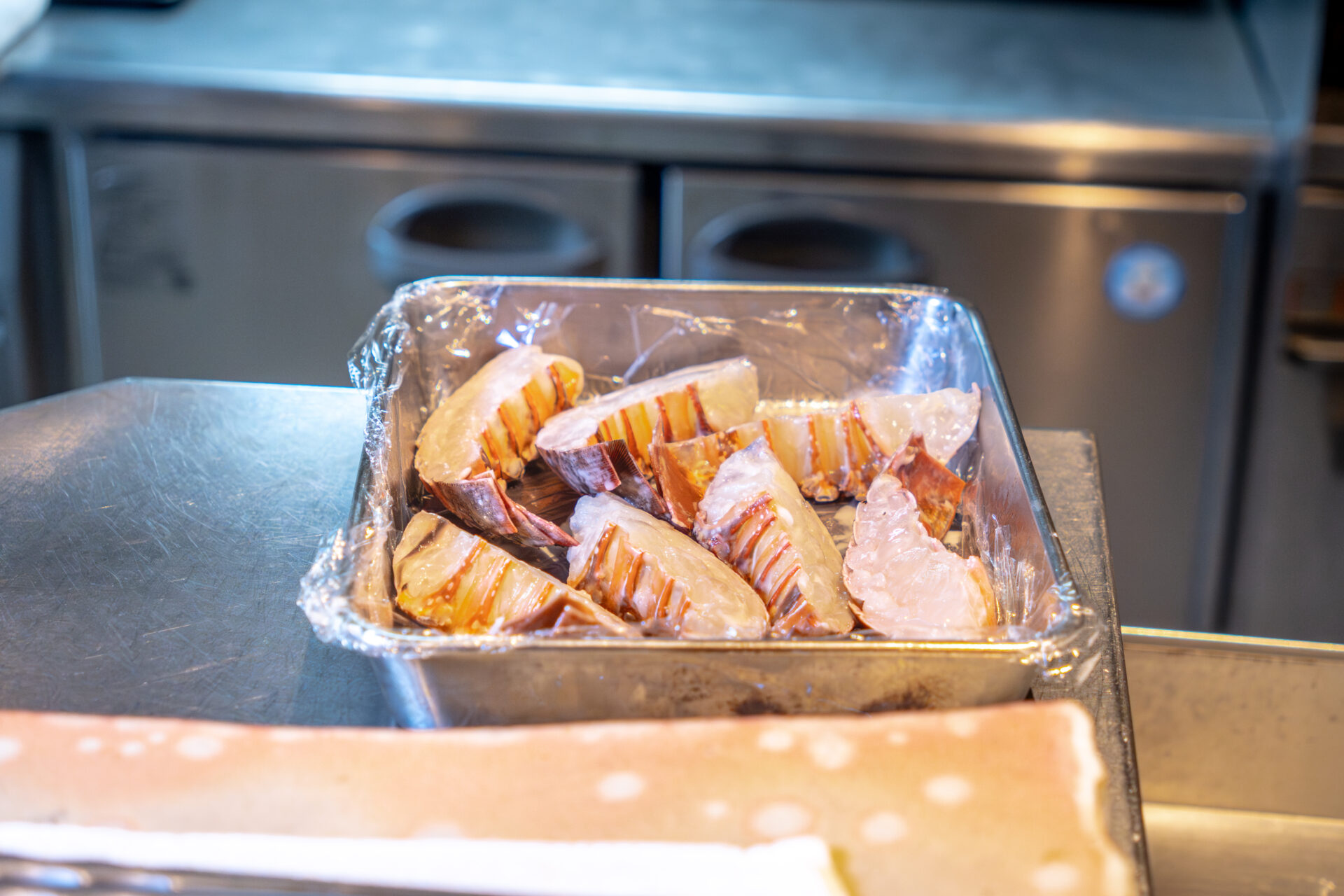
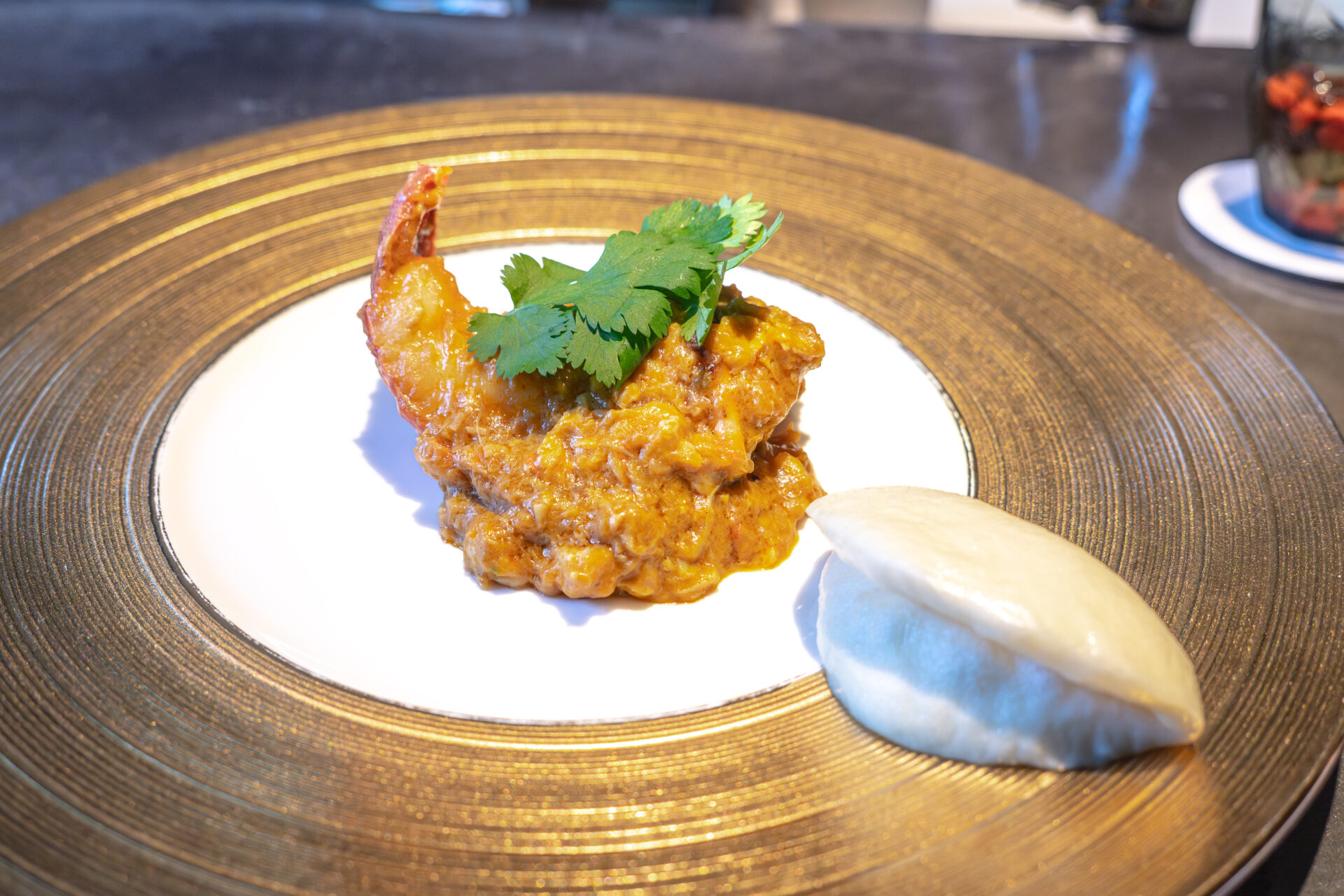
燒鷄砵鷄粥(Roasted Chicken and Claypot Rice with Crisped “Ko Pa”)
Toward the end of the meal came a claypot rice dish destined to be remembered.
The “Ko Pa” refers to the scorched rice at the bottom of the pot. Here, it was intentionally dried and deep-fried, then finished with a steaming vegetable-rich sauce that was poured over, creating an audible sizzle and transforming into a crispy-turned-tender finish.
It was a reinterpretation of rice’s afterglow, merging texture with soul-warming flavors. Chef Ueoka reportedly spent extensive time developing this dish.
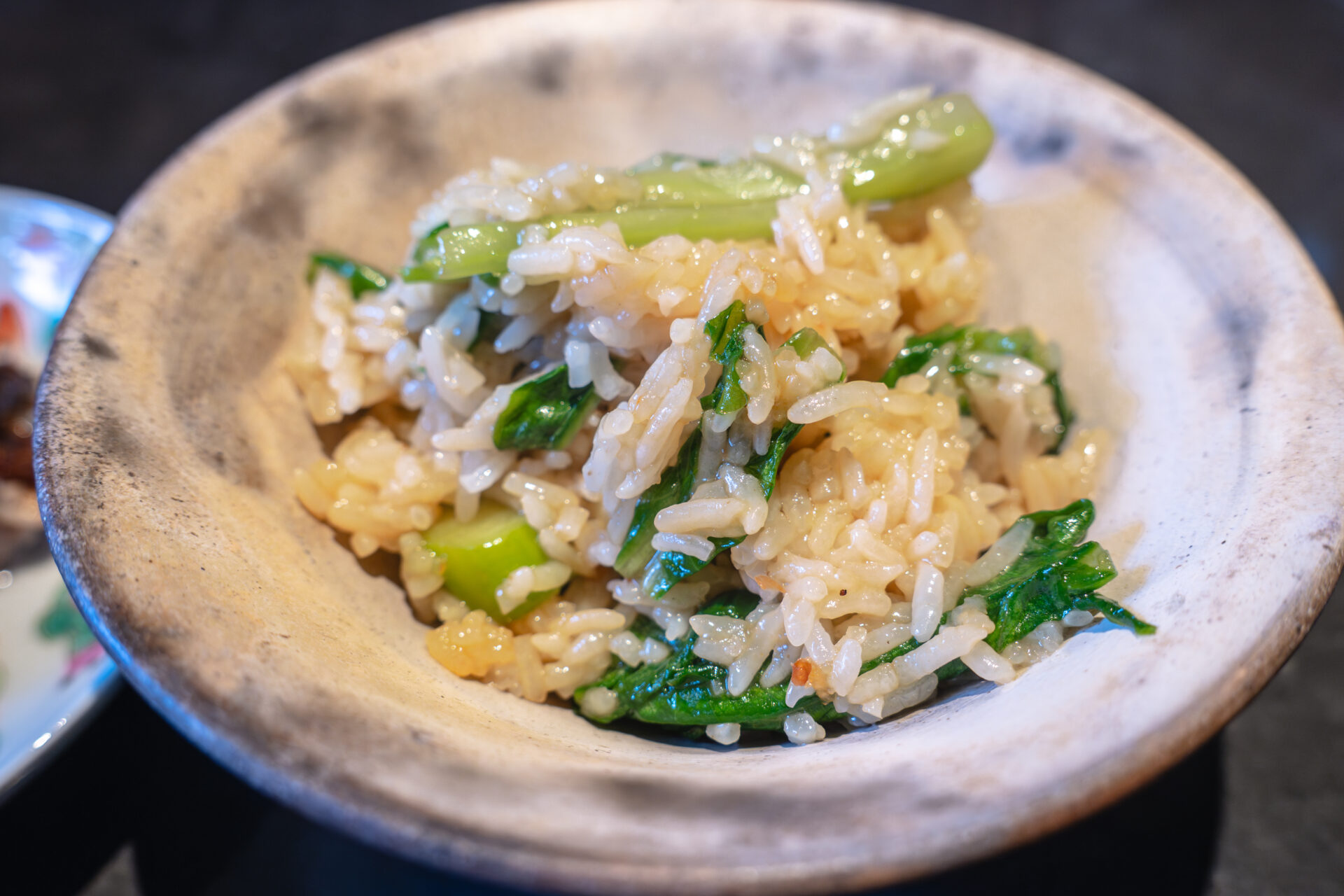
Alongside it, there was:
-
Cantonese-style roast chicken
-
A clear broth of local chicken, clam, and aosa seaweed
Each element stood strong on its own, and together, brought the course to a resonant close.
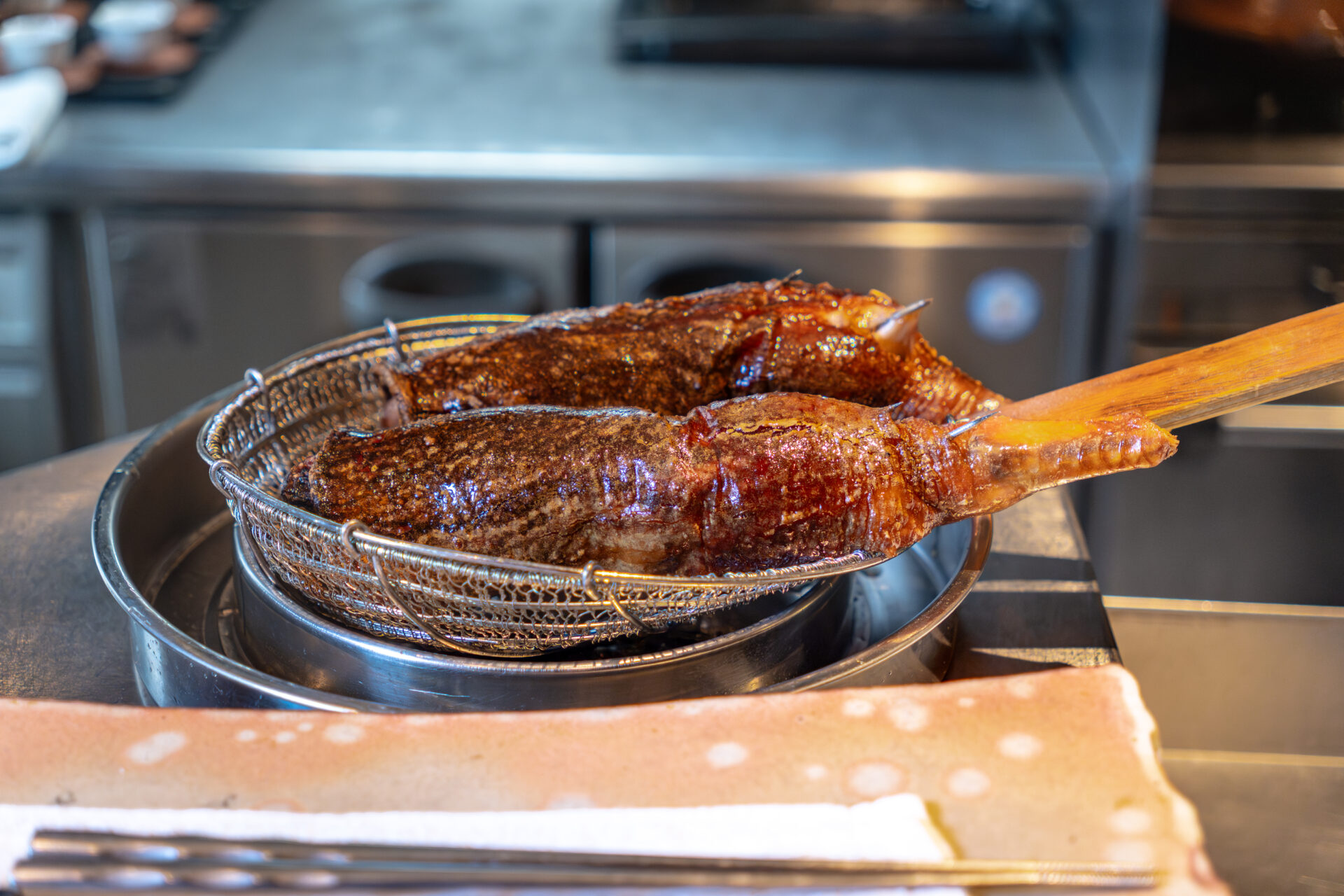
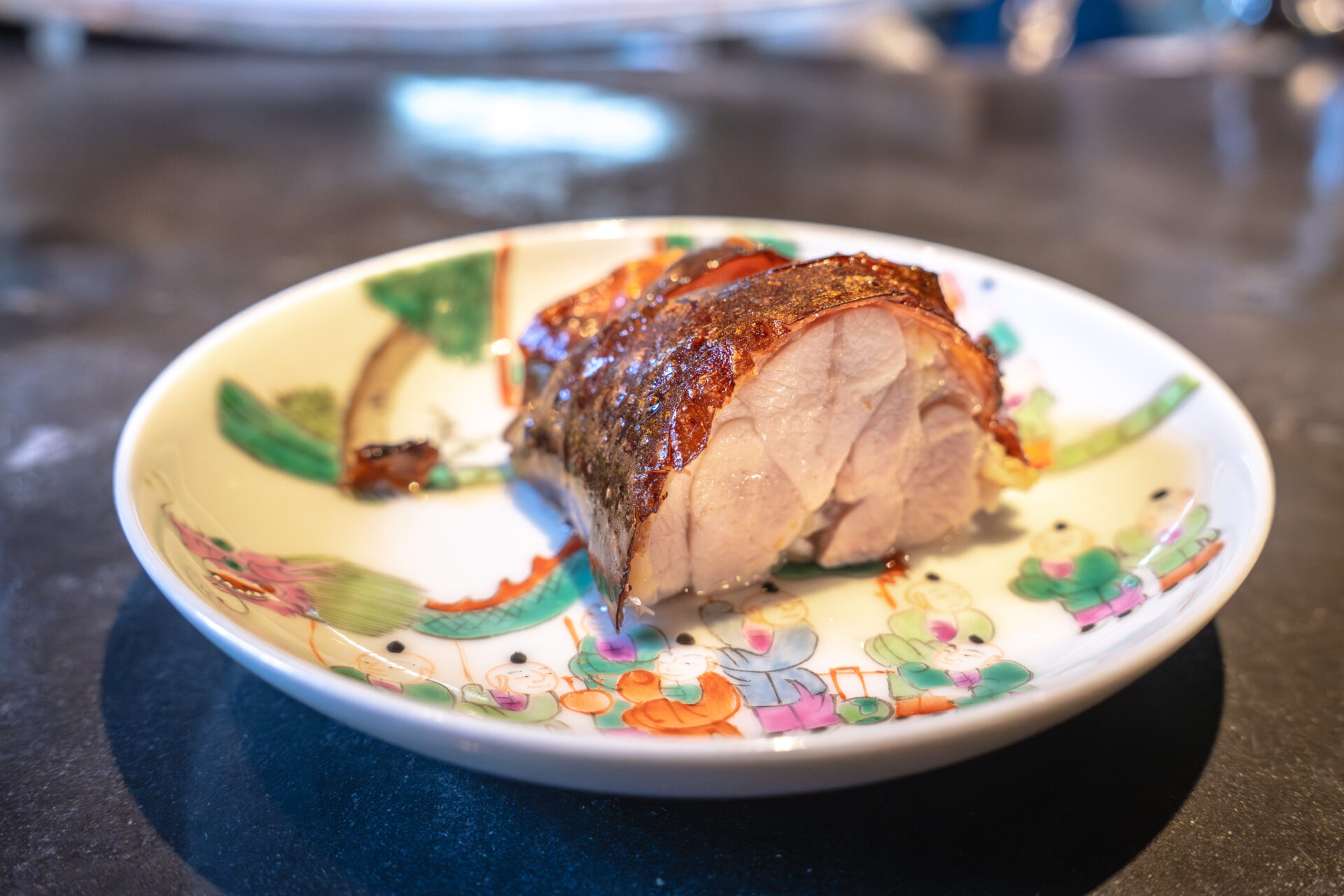
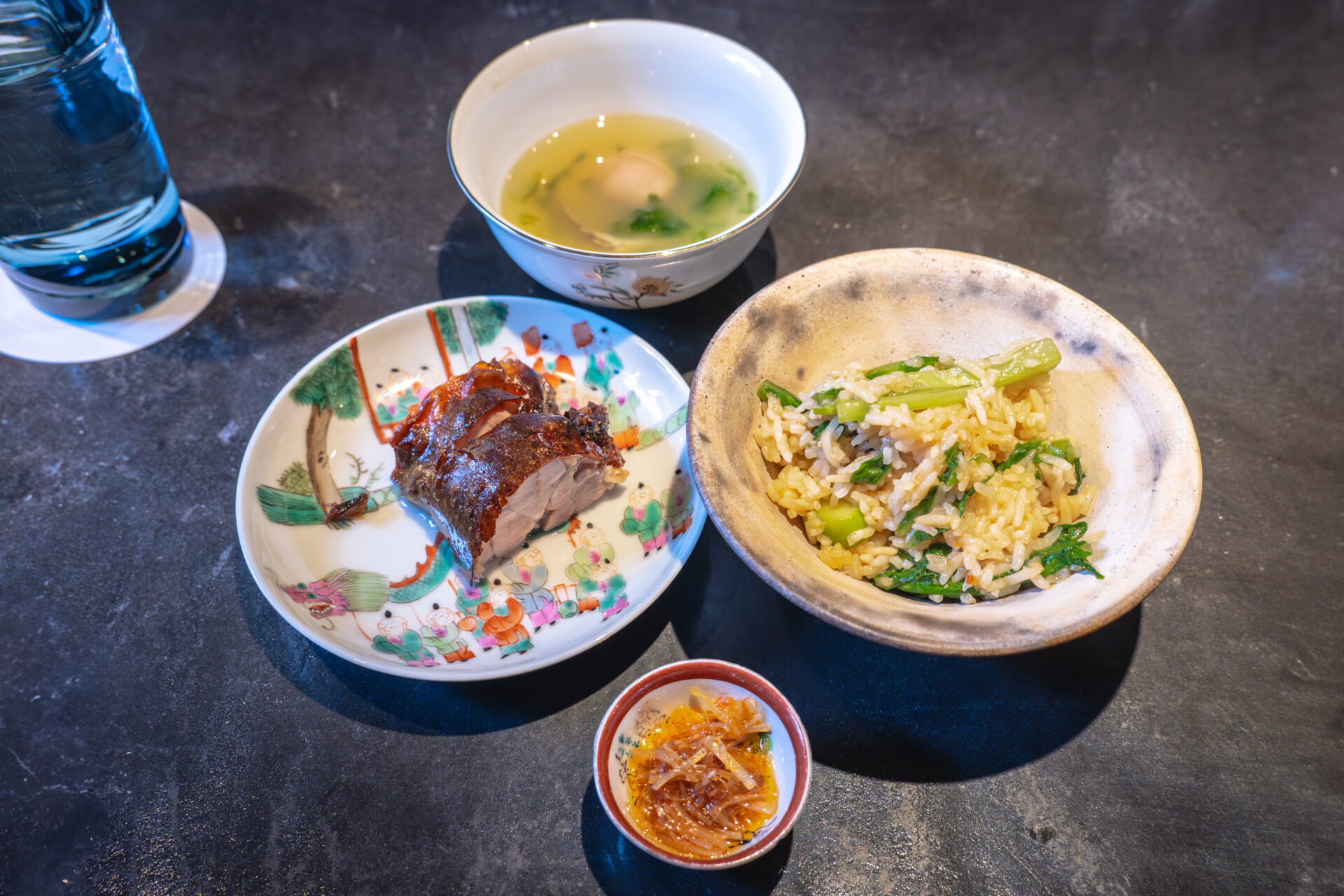
Dessert & Finale
美味甜点心(Today’s Dessert Trio)
-
A mango pudding perfumed with coconut, gently set with egg white, offering a silky and refreshing finish
-
A crisp, savory-sweet cookie made with salted duck egg
-
A flavor-rich canelé infused subtly with Shaoxing wine
And finally, a cup of Chinese tea, carefully brewed by the chef at the counter—aromatic, cleansing, and a perfect coda to a deeply immersive meal.
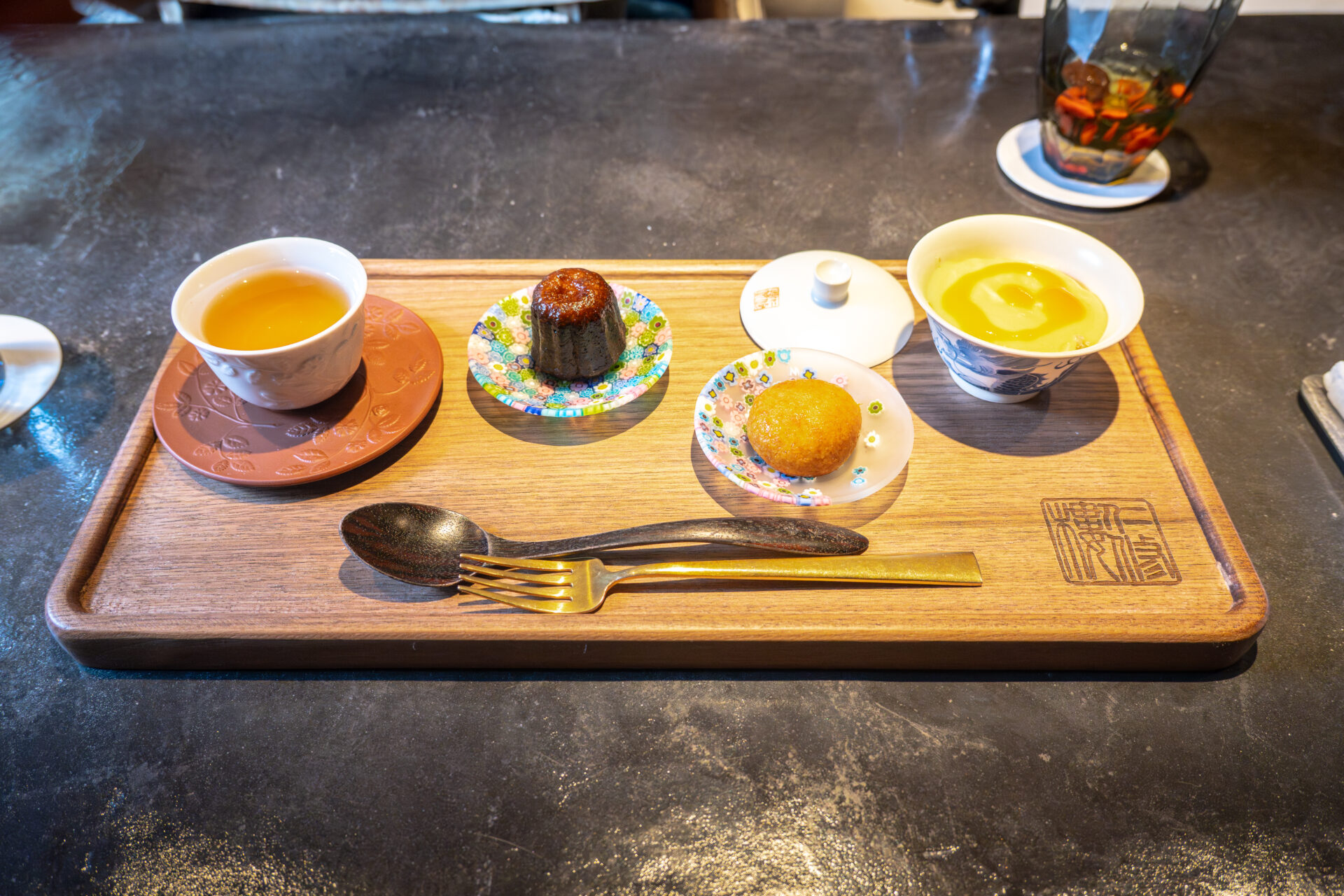
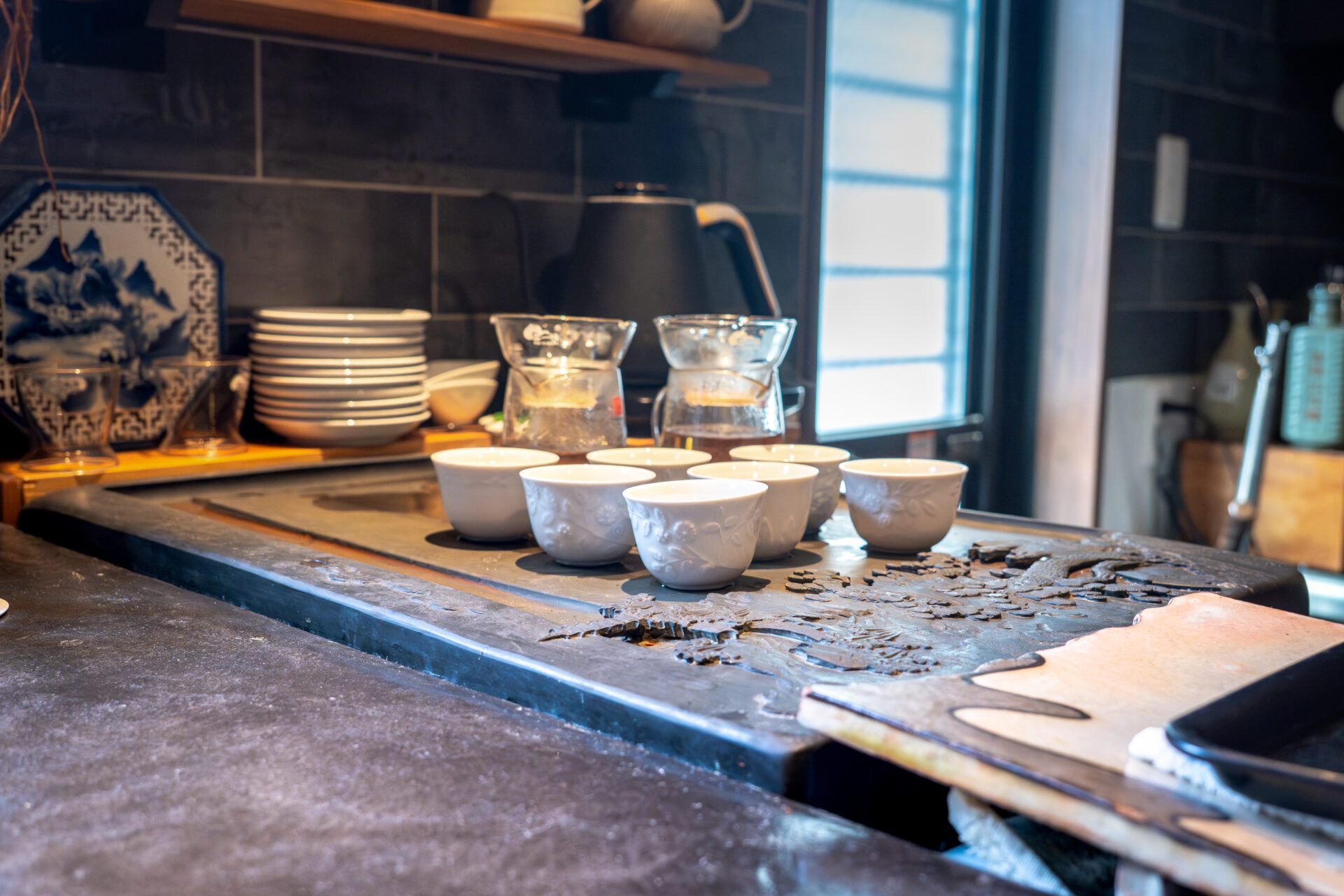
Summary & Impressions
Tucked away in a quiet corner of Rakuhoku, Kyoto, Ninshōrō stands serene and unassuming. In the gentle afternoon sunlight, the full-course Cantonese experience here leaves a particularly clear and refined impression, distinct from the ambience of evening service.
The meal begins with a warming consommé of red dates, ginger, and sea snail, gently coaxing the appetite awake. A vibrant array of appetizers follows, bursting with seasonal expression and meticulous craftsmanship.
Shark fin simmered in a broth of Jinhua ham and chicken, smoked pigeon scented with jasmine rice and tea leaves—each dish quietly draws out the best of its ingredients, layered with complexity in both aroma and texture.
Two courses of Ise-ebi (spiny lobster) offered dramatically different expressions: one fragrant with Dragon Well tea-infused oil and crisped caul fat, the other enriched with a coconut-egg sauce, soft and mellow. This transformation of a single ingredient spoke volumes about the chef’s compositional finesse.
The finale, a reimagined claypot rice with crispy scorched rice (“Ko Pa”), crowned with sizzling sauce, brought a deeply satisfying close to the savory portion.
Even desserts—like the mango pudding with coconut, Shaoxing-scented canelé, and salted egg cookie—played with texture and aroma in playful, elegant ways. Finally, a quietly brewed cup of Chinese tea at the counter brought the experience to a graceful close.
At lunchtime, Ninshōrō feels like a still life in motion—each dish speaks gently, yet with clarity and depth. It’s a place untouched by the outside world, where subtlety, strength, and a sense of play live side by side.
This was a lunch that lingers in memory—and inspires a desire to return with the changing seasons.
Reservations & Access
◆ Reservations
Ninshōrō operates by reservation only. Both lunch and dinner are chef’s choice courses, and advance booking via the official website or by phone (075‑366‑8843) is required.
-
Typically, new reservations open in odd-numbered months, while even-numbered months are reserved for returning guests or special formats.
-
Occasionally, new slots are released outside this schedule. These are usually announced on Instagram (@ninshurou).
To secure a spot, regularly checking the official Instagram is highly recommended.
Note: The cancellation policy is strict. Cancellations on the day of or the day before incur a 100% charge, so plan accordingly.
◆ Access
-
Address:
2-12 Kitakurisu-chō, Shichiku, Kita-ku, Kyoto 603-8433 -
Nearest stop:
About 1-minute walk from “Ōmiya Kōtsūkōen-mae” bus stop (Kyoto City Bus Route 46) -
From subway:
About 20 minutes on foot from Kitaōji StationNo private parking is available. Please use nearby coin-operated lots.
◆ Hours
-
Closed: Wednesdays
-
Service:
Full-course only, both lunch and dinner
(Last seating: 8:00 PM)
Note: Hours may vary by season or reservation volume.
- TAGS

